Behind “Like a Boss,” the NYT work diary/column by podcaster/writer/strategist @aminatou



This site is made possible by member support. ❤️
Big thanks to Arcustech for hosting the site and offering amazing tech support.
When you buy through links on kottke.org, I may earn an affiliate commission. Thanks for supporting the site!
kottke.org. home of fine hypertext products since 1998.
Entries for November 2018
A Rare Interview with Olivia Jaimes, the Pseudonymous Cartoonist Behind “Nancy”

At Vulture, my father* Abraham Riesman scored an interview with Olivia Jaimes, a mysterious young (?) cartoonist who’s resurrected the venerable strip “Nancy” for the 21st century.
Do you remember how you first got exposed to “Nancy”?
I read newspaper strips, so she was kind of in the air I was breathing. And my parents actually have an original “Nancy” in the house that I’ve read now, maybe, 10 million times. I’ll describe it to you.
Please.
Okay, so, panel one, Nancy’s looking at Sluggo and she’s like, “I really wish that guy would take a bath.” And then in panel two, she’s thinking really hard about soap and her eyes are looking at him and there’s a dashed line. And then in the third panel he hasn’t taken a bath, but instead, he’s sitting on a soapbox, blowing soap bubbles, and listening to a soap opera. She has not succeeded in her goal. I was really more into Pokémon. When I was reading the newspaper strips, I was like, No, what I gotta read is “Zits” and “Mutts” and other things that are cool for me, age 9. It wasn’t until I was in my early 20s that I really got into “Nancy,” and it was because there was a Tumblr that just posted panels out of context. Like, Nancy imagining a bank blowing up, or Nancy parading around banging something really loud. They were a gateway to more Nancy for me.
On her vision for the comics:
Why did you decide to lead off your run on the comic with the strip about Nancy eating corn bread?
I went back and I looked at the end of [previous “Nancy” cartoonist] Guy Gilchrist’s run. Nancy as a character had drifted from where I envision her, in that the Nancy I know and love is a total jerk and also gluttonous and also has big feelings and voraciously consumes her world. And I was like, I need to do a character-reset week. Just kinda being like, Here’s who Nancy’s gonna be right now. And also, I love corn bread. So, that’s it. That’s the reason. I wanted to reset expectations and pay homage to my favorite food.

It’s funny that you say the Nancy you know and love is a jerk because that plays into my thesis about why your version of the strip has caught on. We’re living in this era of a curious sort of hedonism, where we’re totally aware and ashamed that we’re being slothful and vain and greedy, but we continue doing it all anyway. Nancy is our avatar, and we look at her and laugh because we see how terrible we, ourselves, are. Or maybe I’m off base.
No, that’s so true! Okay, so, yeah, I wanna talk more about this with you because I think you’re really onto something. There’s this thing in webcomics: #relatable. And #relatable can be used as a slur. To be like, “Uh, your comic is pandering to people.” I’m almost always in the camp where … It’s not like comics are easy, but I think it’s great to be relatable, and I don’t want people to use relatable as an insult. I feel like Nancy is #relatable, except that she also isn’t apologetic. So, there’s the camp of #relatable, which is like, “I’m the worst person: I can’t stop eating bread,” or “I can’t get out of bed,” and like, Nancy is that, but then she’s also like, “So what?” The kind of self-hating type that often comes with relatable comics. The self-hating part that often comes with #relatable comics is being like, “Ohhhh, I procrastinated, I’m the worst.” And “Nancy” adds one more panel to that, being like, “Who cares? I don’t care. More corn bread for me.”
On why Nancy is studying robotics:
I realized that all of the nouns that Nancy used to have are being supplanted by a phone. Things that she would have lying around the house to make up a joke are gone. She uses megaphones for a ton of things in Bushmiller’s strips, and I don’t have megaphones lying around my house. So how, then, can Nancy solve problems, given that technology is advancing to the point where problems are being solved in really nonphysical ways? That’s why I’m making her learn robotics. It opens up a wider range of visual gags to make down the line.
It’s been a long, long time since I read a daily comic strip. Probably The Boondocks in its heyday, or one of the Bloom County resurrections. But I read Nancy. It’s consistently warm, weird, current, and good.

* Abe’s not actually my dad, it’s just a fun running gag between redheads
The pathology of fetishizing pathology isn’t limited to Louisiana. Abuse, Fear and Intimidation: How Viral Videos Masked a Prep School’s Problems
Ask Dr. Time: In Praise of Hope

This week’s edition of Noticing, the Kottke.org newsletter, features the return of Doctor Time, the world’s only metaphysical advice columnist. In this case, the good doctor tries to explain the difference between faith and hope, and tries to understand what hope might mean in the absence of God. Here’s the section in full. For more thoughtful goodness, subscribe to the newsletter! I write it just about every week; if you like my posts or Jason’s posts at all, I think you’ll like it.
What’s the difference between faith and hope?
Okay, to be fair, nobody actually asked this question in this way, but the distinction came in conversation more than once this week, and for lots of reasons, it’s worth talking about right now. For the answer, we’re going to start with an excellent podcast episode from the BBC’s In Our Time, all about the philosophy of hope.
The episode starts its genealogy with Hesiod, who right away poses the problem of Pandora’s Box and/or Jar: Hope is sealed up in the jar of all the evils in the world, but does that make it one of the evils Zeus sent to punish humanity with, or is it a good in our pantry that helps us deal with all the other evils? Even the Greeks seem split on this: Hesiod’s original story is decidedly pessimistic, and Plato and Aristotle didn’t set much store by hope, but one Greek-speaker, St. Paul, thought enough of hope that he put it with faith and love as part of a second Holy Trinity of Christian virtues. (I guess if faith is God the father, and love is Christ, hope is the holy spirit? Probably not worth mapping them onto each other too closely.)
Anyways, the really great thinker on hope is St. Augustine, who is MY MAN for many, many reasons. (I’m not Catholic or Christian any more, but I love the way the great theologians think about the universe and its problems, and Augustine is the very best one.) For Augustine, hope is first and foremost about the second coming, and the ultimate fulfillment of human beings and their potential. So you have faith, a belief that God is real and salvation is possible, which is given to you by God, you can’t manufacture it. You have love — also caritas, or charity — a kind of selfless outpouring of affection and righteous deeds towards God and all His works, especially other human beings. And then you have hope, which is this imaginative representation of being fulfilled and made whole at the end of time.
Time is important for Augustine, and hope becomes a kind of ontological structure for understanding time. Augustine thinks of temporality as a kind of eternal stretching of the now, from the beginning of time in the creation through the end of time in the resurrection, and hope is also imagined as a kind of stretching. This is how he puts it in his tractates on the first letter of John:
The entire life of a good Christian is in fact an exercise of holy desire. You do not yet see what you long for, but the very act of desiring prepares you, so that when he comes you may see and be utterly satisfied.
Suppose you are going to fill some holder or container, and you know you will be given a large amount. Then you set about stretching your sack or wineskin or whatever it is. Why? Because you know the quantity you will have to put in it and your eyes tell you there is not enough room. By stretching it, therefore, you increase the capacity of the sack, and this is how God deals with us. Simply by making us wait he increases our desire, which in turn enlarges the capacity of our soul, making it able to receive what is to be given to us.
So, my brethren, let us continue to desire, for we shall be filled. Take note of Saint Paul stretching as it were his ability to receive what is to come: Not that I have already obtained this, he said, or am made perfect. Brethren, I do not consider that I have already obtained it.
It’s kind of sexy, isn’t it? Holy desire! Stretching ourselves to be filled up! Utter satisfaction! It’s a kind of religious tantra.
And hope, like faith, is a thing that happens to us. We don’t will it; it’s inflicted on us and we receive it, make it manifest, and figure out what to do with it. This bothered the classical Greeks tremendously, because their virtues were virtues of control and mastery. But for Greek-speaking Jews and the Christians that followed them, the passive nature of hope was itself a virtue. It left room for the Messiah to walk through the door.
It also means that hope has a secular dimension that faith just doesn’t. Any object can be an object of hope. Hoping for ordinary fulfillment trains us to hope for spiritual fulfillment. It stretches us out. It makes our hearts bigger. It makes time intelligible for human beings. For all these reasons, hope, more so than faith and even love, is my favorite theological virtue. It’s the most powerful. It’s the easiest one to lose. And we are at our best and most human when we find room to hold holy our deepest hopes.
“The philosophical canon, such as it is, was not always so European and male, even by the lights of European men.” A deep, moving dive into Asian, Muslim, American, and European traditions of women in philosophy:
Borges on God’s Nonexistence and the Meaning of Life

This link comes from Zito Madu, who knows what I like. An interview with Jorge Luis Borges from 1981.
On the meaning of life:
If life’s meaning were explained to us, we probably wouldn’t understand it. To think that a man can find it is absurd. We can live without understanding what the world is or who we are. The important things are the ethical instinct and the intellectual instinct, are they not? The intellectual instinct is the one that makes us search while knowing that we are never going to find the answer.I think Lessing said that if God were to declare that in His right hand He had the truth and in his left hand He had the investigation of the truth, Lessing would ask God to open His left hand - he would want God to give him the investigation of the truth, not the truth itself. Of course he would want that, because the investigation permits infinite hypotheses, and the truth is only one, and that does not suit the intellect, because the intellect needs curiosity. In the past, I tried to believe in a personal God, but I do not think I try anymore. I remember in that respect an admirable expression of Bernard Shaw: ”God is in the making.”
On time and space:
I am naturally idealistic. Almost everyone, thinking about reality, thinks of space, and their cosmogonies start with space. I think about time. I think everything happens in time. I feel we could easily do without space but not without time. I have a poem called ”Cosmogony” in which I say it is absurd to think the universe began with astronomical space, which presupposes, for example, sight, which came much later. It is more natural to think that in the beginning there was an emotion. Well, it is the same as saying, ”In the begining was the Word.” It is a variation on the same theme.
On faith in God:
I cannot believe in the existence of God, despite all the statistics in the world.
But you said you believed some time ago.
No, not in a personal God. To search for the truth, yes; but to think that there is somebody or something we call God, no. It is better that He should not exist; if He did he would be responsible for everything. And this world is often atrocious, besides being splendid. I feel more happy now than when I was young. I am looking forward. Even I don’t know what forward is left, because at 86 years of age, there will be, no doubt, more past than future.
When you say you are looking forward, do you mean looking forward to continuing to create as a writer?
Yes. What else is left for me? Well, no. Friendship remains. Somehow, love remains - and the most precious gift, doubt.
On death and life after death:
In the ”Zohar” (”The Book of Splendor”), which Gershom Scholem considers the most important literary work of the kabbala, there are many speculations about life after death. Swedenborg describes in detail hells and paradises. Dante’s poem is also about hell, purgatory, paradise. Where does this tendency of man come from, to try to imagine and describe something that he cannot possibly know?
In spite of oneself, one thinks. I am almost sure to be blotted out by death, but sometimes I think it is not impossible that I may continue to live in some other manner after my physical death. I feel every suicide has that doubt: Is what I am going to do worthwhile? Will I be blotted out, or will I continue to live on another world? Or as Hamlet wonders, what dreams will come when we leave this body? It could be a nightmare. And then we would be in hell. Christians believe that one continues after death to be who he has been and that he is punished or rewarded forever, according to what he has done in this brief time that was given to him. I would prefer to continue living after death if I have to, but to forget the life I lived.
Borges’s thinking has strong gnostic influences, which appeal to me and are well represented here: essentially, taking a Platonic-Christian metaphysics, but subtracting a benevolent God from the center in favor of one who’s capricious, if not evil, or has absconded from the world. His magnificent short story “Three Versions of Judas” extrapolates this brilliantly to a new understanding of the Messiah:
Toward the end of 1907, Runeberg finished and revised the manuscript text; almost two years passed without his handing it to the printer. In October of 1909, the book appeared with a prologue (tepid to the point of being enigmatic) by the Danish Hebraist Erik Erfjord and bearing this perfidious epigraph: In the world he was, and the world was made by him, and the world knew him not (John 1:10). The general argument is not complex, even if the conclusion is monstrous. God, argues Nils Runeberg, lowered himself to be a man for the redemption of the human race; it is reasonable to assume that the sacrifice offered by him was perfect, not invalidated or attenuated by any omission. To limit all that happened to the agony of one afternoon on the cross is blasphemous. To affirm that he was a man and that he was incapable of sin contains a contradiction; the attributes of impeccabilitas and of humanitas are not compatible. Kemnitz admits that the Redeemer could feel fatigue, cold, confusion, hunger and thirst; it is reasonable to admit that he could also sin and be damned. The famous text “He will sprout like a root in a dry soil; there is not good mien to him, nor beauty; despised of men and the least of them; a man of sorrow, and experienced in heartbreaks” (Isaiah 53:2-3) is for many people a forecast of the Crucified in the hour of his death; for some (as for instance, Hans Lassen Martensen), it is a refutation of the beauty which the vulgar consensus attributes to Christ; for Runeberg, it is a precise prophecy, not of one moment, but of all the atrocious future, in time and eternity, of the Word made flesh. God became a man completely, a man to the point of infamy, a man to the point of being reprehensible - all the way to the abyss. In order to save us, He could have chosen any of the destinies which together weave the uncertain web of history; He could have been Alexander, or Pythagoras, or Rurik, or Jesus; He chose an infamous destiny: He was Judas.
In vain did the bookstores of Stockholm and Lund offer this revelation. The incredulous considered it, a priori, an insipid and laborious theological game; the theologians disdained it. Runeberg intuited from this universal indifference an almost miraculous confirmation. God had commanded this indifference; God did not wish His terrible secret propagated in the world. Runeberg understood that the hour had not yet come. He sensed ancient and divine curses converging upon him, he remembered Elijah and Moses, who covered their faces on the mountain top so as not to see God; he remembered Isaiah, who prostrated himself when his eyes saw That One whose glory fills the earth; Saul who was blinded on the road to Damascus; the rabbi Simon ben Azai, who saw Paradise and died; the famous soothsayer John of Viterbo, who went mad when he was able to see the Trinity; the Midrashim, abominating the impious who pronounce the Shem Hamephorash, the secret name of God. Wasn’t he, perchance, guilty of this dark crime? Might not this be the blasphemy against the Spirit, the sin which will not be pardoned (Matthew 12:3)? Valerius Soranus died for having revealed the occult name of Rome; what infinite punishment would be his for having discovered and divulged the terrible name of God?
Intoxicated with insomnia and with vertiginous dialectic, Nils Runeberg wandered through the streets of Malmö, praying aloud that he be given the grace to share Hell with the Redeemer.
The messiah as Judas, the rejected cornerstone, a mirror Christ buried in ignominy and forever doomed to suffering in hell for humankind’s sins and his own degradation. It’s both the ultimate extension of the Christ story and, like George Steiner said of Euripides’s Bacchae, a dark miracle. For my money, it’s the only catechism worth professing.
Europa Excursion, a children’s book about anthropomorphic animals exploring one of Jupiter’s most interesting moons, just met its Kickstarter goal. There’s still time to get in on the book and other early bird rewards:
Forget Book Trailers: Book Playlists are the New Hotness
Book trailers are already such a thing that there’s whole weekly columns devoted to them, a whole slew of tips and tricks; a veritable ecosystem. People want multimedia with their books. But what if the new hotness wasn’t a trailer at all? What if it was something that lots of us already do anyways, with a much lower barrier for entry?
I’m talking about book playlists, music that reflects the theme or the time and place of the book, a non-audiobook soundtrack that enhances and embellishes the written word. I love this idea!
Now, there are, as I see it, two ways to go with playlists period, and book playlists in particular. First, you can go big. Spotify and other music services can support hundreds of songs in individual playlists, and there’s no reason why you have to have just one. You can literally drown your reader/listener in sweet tunes to listen to while they read, to get psyched up while they’re waiting for their books to arrive, or to have a way to interact with the world of a book they might not even read or by.
This is the approach Questlove took when making a playlist for Michelle Obama’s blockbuster Becoming. It’s over a thousand songs split into three playlists, covering 1964 (Michelle’s birth year) to the present. Amazingly, as far as I can tell, there’s not a dud in the bunch. These selections are ridiculously good.
The other approach, which is a little more feasible for most of us, is to make a playlist about the length of an old mix CD — about 80 minutes, for those who don’t remember (and 60, 90, and 120 for those who remember back to cassette tapes). This is best exemplified by Tressie McMillan Cottom’s outstanding book playlist for her new essay collection Thick (now available for preorder). Here, too, the selection is terrific — and if I can say, a touch more personal and intelligible than Questlove’s epic collection.
If I ever write a book (and that day seems farther away every year), I’m definitely doing this. Hmm — I wonder what a Kottke.org playlist would look like? [smiles mischievously]
Update: Brett Porter points out that Thomas Pynchon created a playlist for Inherent Vice that includes songs mentioned in the book. Kyle Johnson notes that largehearted boy’s Book Notes series consists of book playlists by various authors each week inspired by their books, including “Jesmyn Ward, Lauren Groff, Bret Easton Ellis, Celeste Ng, T.C. Boyle, Dana Spiotta, Amy Bloom, Aimee Bender, Heidi Julavits, Hari Kunzru, and many others.”
Photography Tricks That Advertisers Use to Make Food Look Delicious
To make food look appetizing in advertisements, food stylists use a bunch of tricks that may not even involve edible objects. For example, syrup on pancakes is motor oil (because it doesn’t absorb), Elmer’s glue is cereal milk (it prevent the cereal from sinking), shaving cream is whipped cream (doesn’t melt), and dish soap helps the head on a beer appear foamier and last longer. Check it out:
(via @machinepix)
The 100 Best Pens
I’m certain the pen community has a lot to say about this New York Magazine list of the 100 best pens, but for the rest of us just looking for something good to write with, it appears like a solid place to start. Tip: skip right to the top 20…no need to buy a pen that’s 63rd best.
My current go-to pen, the Zebra F-301, is not on the list but was the first ballpoint or rollerball pen I found that I didn’t totally ruin because I was left-handed. Ballpoint pens are meant to be pulled over the paper so that the tiny ball rolls easily, dispensing ink along the way, which right-handers do naturally as they write from left to right. But lefties often push the pen across the paper, going against the grain…which eventually gums up the works and renders the pen useless. This list didn’t consider the durability of pens, especially under the brutal treatment of the left-handed, but I still might give the runner-up pen a shot: OHTO Horizon Needle Point Knock.
Sixteenth-Century Flemish Superheroes



Sacha Goldberger made a series of portraits of characters from Star Wars and superhero comics as if they were the subjects of 16th-century Flemish paintings, ruffs and all. (thx, anna)
How Parmesan Cheese Is Made
Officially, according to the Italian government and the EU, parmesan cheese (or more formally, Parmigiano-Reggiano) can only be made in a small region in northern Italy. Wheels of Parmigiano-Reggiano weigh about 85 pounds, can be aged for three years or more, and can cost upwards of $1000. With all the fakes out there (see also olive oil and canned tomatoes), it can be tough to find the real stuff, but when you do, it tastes amazing.
Update: Headline writers might wait their whole careers for an opportunity like this: A Bank That Accepts Parmesan As Collateral: The Cheese Stands A Loan. (via @jazzfishzen)
2.4-million-year-old tools found in Algeria place hominids there far earlier than previously thought. Don’t miss the Rihanna reference in the URL slug. :)
Life expectancy in the US continues to drop. “People are essentially dying from preventable deaths due to stress, hopelessness, and desperation, reflected in the suicide and overdose numbers.”
Jack White has a “no phones” policy at his concerts. “The no-phones policy illuminated something about smartphone use that’s hard to see when it’s so ubiquitous: our phones drain the life out of a room.”
They Shall Not Grow Old
Earlier this year, I wrote that director Peter Jackson was working on a documentary about WWI that would feature film footage cleaned up and colorized with the same special effects technology used to produce massive Hollywood films like Jackson’s own LOTR movies.
The footage has been stabilized, the grain and scratches cleaned up, and the pace slowed down to from comedic to lifelike. Jackson’s also planning on using colorization to make the people in that old footage seem as contemporary as possible.
The brief glimpses of the cleaned and colorized footage in the initial trailer were tantalizing, but the newly released trailer above is just breathtaking or jaw-dropping or however you want to put it. I’ve watched it three times so far…some of those scenes are so vivid they could have happened yesterday! That what viewing early color photography and film does to you:
Until recently, the color palette of history was black and white. The lack of color is sometimes so overpowering that it’s difficult to imagine from Matthew Brady’s photos what the Civil War looked like in real life. Even into the 1970s, press photos documenting the war in Vietnam were in B&W and the New York Times delivered its news exclusively in B&W until the 90s, running the first color photograph on the front page in 1997.
Which is why when color photos from an event or era set firmly in our B&W history are uncovered, the effect can be jarring. Color adds depth, presence, and modernity to photography; it’s easier for us to identify with the people in the pictures and to imagine ourselves in their surroundings.
Jackson talked to the BBC about how the film was made:
Check out this post at Open Culture for more about the making of the film.
They Shall Not Grow Old just became my #1 most-anticipated movie for the rest of 2018. It’s only showing in the US on Dec 17 and Dec 27…I just got my ticket here.
The Fake Rolex of Canned Foods. “According to the guy who oversees the certification of those tomatoes, at least 95 percent of the so-called San Marzanos in the U.S. are fakes.”
Opioid overdoses have fallen sharply in Dayton, Ohio. City officials attribute the drop to greatly expanded access to treatment (esp for low-income people) and other factors.
The End of Space Travel?
Remember Alfonso Cuarón’s Gravity? A missile strike on a satellite causes a chain reaction, which ends up destroying almost everything in low Earth orbit. As this Kurzgesagt video explains, this scenario is actually something we need to worry about. In the past 60 years, we’ve launched so much stuff into space that there are millions of pieces of debris up there, hurtling around the Earth at 1000s of miles per hour. The stuff ranges in size from marbles to full-sized satellites. If two larger objects in low Earth orbit (LEO) collided with each other, the resulting debris field could trigger a chain reaction of collisions that would destroy everything currently in that orbit and possibly prevent any new launches. Goodbye ISS, goodbye weather satellites, goodbye GPS, etc. etc. etc. The Moon, Mars, and other destinations beyond LEO would be a lot harder to reach because you’d have to travel through the deadly debris field, particularly with crewed missions.
“Let It Be” - Life Advice from The Beatles
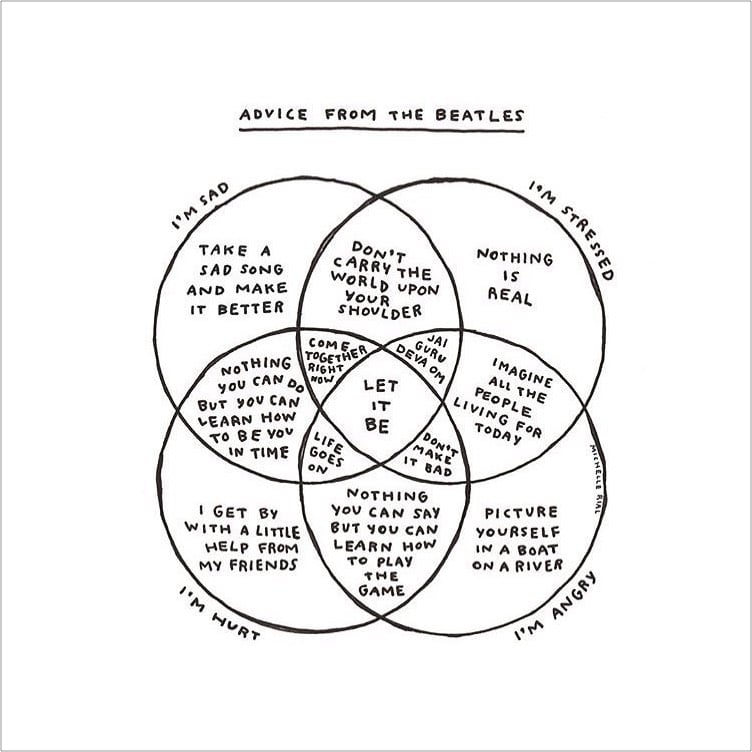
From illustrator Michelle Rial, a Venn diagram of some advice for when you’re sad, angry, stressed, or hurt in the form of Beatles lyrics. “Let It Be” is the perfect middle spot. Prints are available.
The Effects of Pollution on Human Cognition & Performance
While I am not a big fan of shifting to an economic argument for things that are already plenty bad for other better reasons (see diversity in the workplace, immigration policy, healthcare, etc.), this article by Austin Frakt on the economic cost of pollution reports on the results of a number of studies linking pollution to low performance in work and school. This study of baseball umpires was particularly troubling:
Pollution may also affect the quality of work, which is much harder to measure. An intriguing study in the Journal of the Association of Environmental and Resource Economists got at this issue by examining how accurately baseball umpires called balls and strikes under different pollution conditions.
Since 2008, pitch calls have been checked by Major League Baseball with an electronic system. In a typical game, an umpire makes 140 ball/strike calls. When there was a 150 percent increase over average carbon monoxide levels or the same increase in small particulate matter, the study found an average of 1.4 additional incorrect calls. Levels of pollution that high occur in about one in 10 games.
Imagine what the rest of us, especially kids, are getting wrong when we’re in polluted areas (i.e. many American cities). (via @tylercowen)
ISS Time Lapse Video of Two Complete Trips Around the World
To celebrate the 20th anniversary of the first module of the International Space Station being put into orbit, ESA astronaut Alexander Gerst shot a 15-minute time lapse video of the Earth from the ISS, long enough for two complete orbits of the planet. Landmarks along the journey are annotated right on the video and the location of the ISS is also plotted on a map in the top right corner. Love the nighttime thunderstorms over the Pacific.
See also An Incredible Video of What It’s Like to Orbit the Earth for 90 Minutes.
Street style photos of NYC kids. “Q: What inspires your style? A: Fortnite.”
The Testaments, Margaret Atwood’s Upcoming Sequel to The Handmaid’s Tale
On Twitter this morning, Margaret Atwood revealed that she’s writing a sequel to her 1985 dystopian novel The Handmaid’s Tale, inspired in part by “the world we’ve been living in”. According to the pre-order page on Amazon, The Testaments takes place 15 years after the events of the first book and is narrated by three women from Gilead. We’ll have to wait a bit though…the book is due out in early September 2019.
In the meantime, season 3 of the the TV series has started production and will likely debut next spring.
The Best Table Tennis Shot of 2018
This is probably the craziest and most unlikely table tennis shot you will ever see. Just watch. The guy who pulls it off is Christopher Chen from the Trondheim Table Tennis Club in Norway. I haven’t watched ESPN in years so I don’t know if “getting on SportsCenter” is as big a deal as it used to be, but if so, this should get on SportsCenter.
See also the table tennis volley that sounds like the Super Mario Bros theme song and The Community of the Tables.
These Are Barely Maps
Peter Gorman is creating dozens of minimalist maps that he’s rolling up into a book that will be ready late next year (hopefully).
One of my favorites is this map that shows the 5 largest cities in each US state as constellations.

I also like how this map of Manhattan mostly keeps its shape only using subway stations.
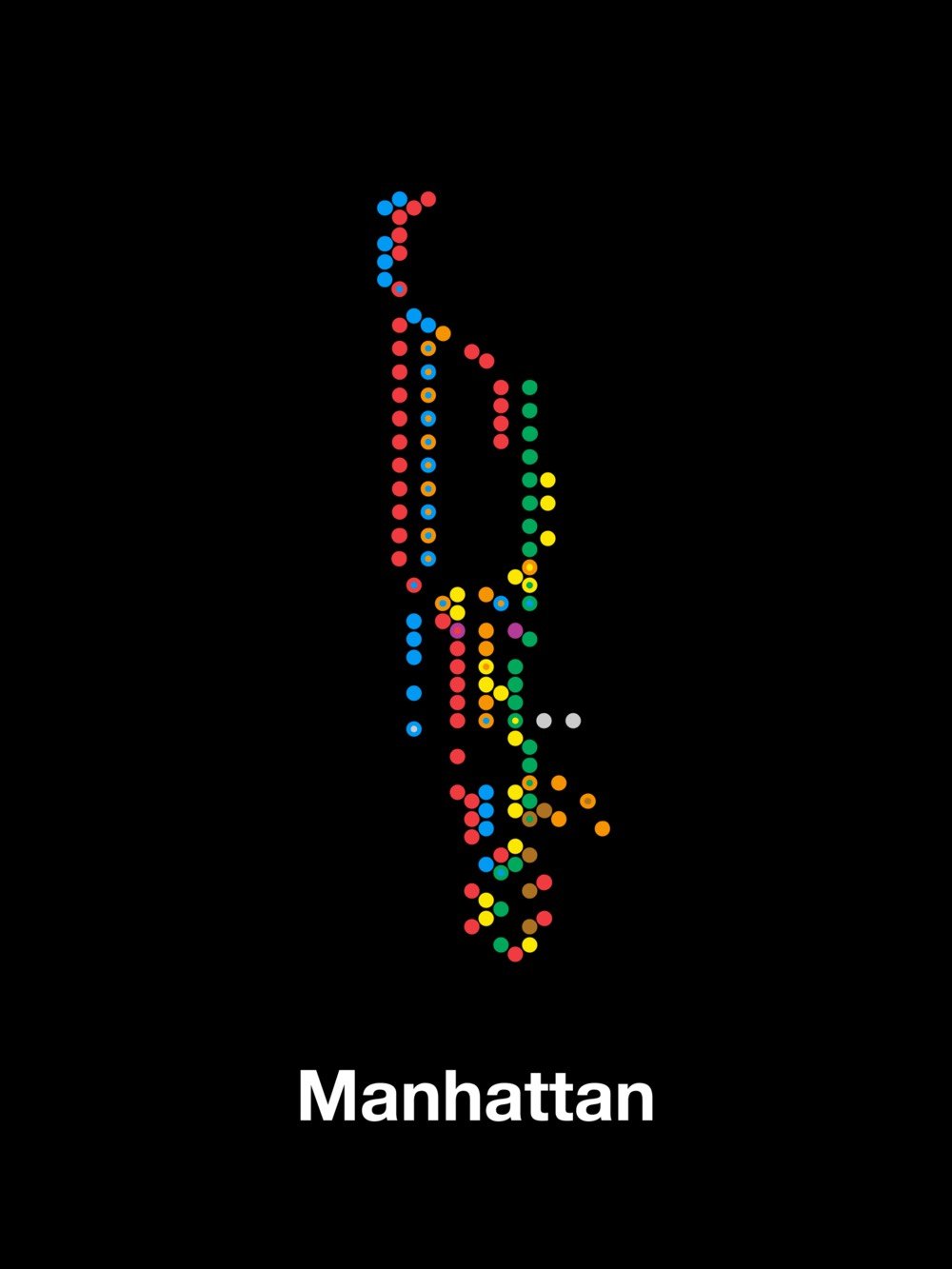
The Salty Avocado
My pals Aaron Cohen and illustrator Chris Piascik, both of whom have contributed to kottke.org for years now, have produced a children’s book called The Salty Avocado, which you can pre-order on Kickstarter.
The Salty Avocado is a children’s book about a truly rotten fruit who finds redemption in the healing power of raspberry hugs. The book features Chris Piascik’s vibrant illustrations and style-defining lettering matched with Aaron Cohen’s playful and endearing story. This book is for kids who like big colors and catchy words, but it’s also for parents who end up reading the same story every single night.
Since it’s Giving Tuesday today, I’ll point out that one of their most popular rewards is the “One for you, one for them” option — you get a book for yourself and they donate a second copy to a school or library of your choice. To sweeten the deal for kottke.org readers, they’ve added an option called “Kottke’s One for you, one for them” that also includes a set of 3 buttons and a PDF copy of the book. It’s the second-to-last day to order, so make sure to check it out before it’s too late.
If the Planets Were As Close As the Moon
Using 3D rendering software, Yeti Dynamics made this video that shows what our sky would look like if several of our solar system’s planets orbited the Earth in place of the Moon. If you look closely when Saturn and Jupiter are in the sky, you can see their moons as well.
the moon that flies in front of Saturn is Tethys. It is Tiny. but *very* close. Dione would be on a collision course, it’s orbital distance from Saturn is Nearly identical to our Moon’s orbit around Earth
Update: And here’s what it would look like if the Earth had Saturn’s rings. (via @FormingWorship)
How a Six-Year-Old Kid Saved Himself from Being Lost in the Woods
When he was six years old, Cody Sheehy got lost in the woods near his home in Oregon. Rather than panic or hunkering down to await rescue, Sheehy hiked more than 15 miles over 18 hours to a nearby town, finding himself in the process.
Cody believes that he was changed by getting lost. “Over the course of your life, you push through a lot of physical barriers,” he says. “As you grow older, your first coach helps you break through barriers, and maybe in the military you learn to push through barriers or maybe in your first hard job. As a little kid, I had this opportunity to be tested and learn that there really aren’t any barriers. I think a lot of people figure that out. They just might not figure it out at six.”
It’s a great story and a sharp rebuke of today’s helicopter parenting, not letting kids do their own thing, etc. I wonder about something though. We would think a lot differently about this tale if he hadn’t survived. If it had been a couple of degrees colder or if those coyotes had been a big hungrier or if he’d have turned a different way on that road, he might have died. Sheehy’s story is an example of survivorship bias. We hear of his adventure and how it transformed his life only because he survived, but it’s possible that nine out of ten kids in similar situations don’t survive…and we hear those tales only briefly and locally, not as features in national magazines.
Watch It Live: NASA’s InSight Probe Lands on Mars Today
After a seven-month journey covering over 300 million miles, NASA’s InSight probe will land on the surface of Mars today around 3pm. The video embedded above is a live stream of mission control at NASA’s Jet Propulsion Laboratory that starts at 2pm and will be the best thing to watch as the probe lands. (See also this live stream of NASA TV.) The landing will occur around 2:47pm ET but the landing signal from Mars won’t arrive on Earth until 2:54pm ET at the earliest. And no video from the landing itself of course…”live” is a bit of a misnomer here but it still should be exciting.
NASA produced this short video that shows what’s involved in the landing process, aka how the probe goes from doing 13,000 mph to resting on the surface in just six-and-a-half minutes.
The NY Times has a good explainer on the InSight mission and landing.
NASA’s study of Mars has focused on the planet’s surface and the possibility of life early in its history. By contrast, the InSight mission — the name is a compression of Interior Exploration Using Seismic Investigations, Geodesy and Heat Transport — will study the mysteries of the planet’s deep interior, aiming to answer geophysical questions about its structure, composition and how it formed.
I love this stuff…the kids and I will be watching for sure!
Update: The Oatmeal has a great comic about the InSight landing.
Fox News Isn’t A Normal Media Company. We Have To Stop Treating It Like One. “Liberals have spent decades complaining about, mocking, and fact-checking Fox News. Instead, we should remove it from polite society.”
Some Cyber Deals for Your Cyber Shopping on Cyber Monday
Retailers love invented holidays and so do shoppers looking for a bargain. The term “Cyber Monday” was coined fairly recently, in 2005, when ecommerce companies started to realize that Internet users in the US waited until after Thanksgiving weekend to begin their holiday shopping. And now the slightly corny term is A Thing™. After a bit of poking around, here are some of the best deals on interesting things that I found.
- The 6-quart Wifi-enabled Instant Pot pressure cooker is on sale for $90. You can schedule your cooking via an app on your phone. If you don’t need that, the regular 6-qt is $70 (30% off).
- 23andMe’s Health + Ancestry DNA testing kit is $129 (35% off). A genetic testing kit from AncestryDNA is only $50 (51% off).
- Hulu is just $0.99/mo for 12 months. What?! That’s worth it just for catching up on The Handmaid’s Tale if you haven’t seen it yet.
- The Oral-B Pro 1000 electric toothbrush is $30 after coupon. I bought one of these this summer and I actually look forward to brushing my teeth now!
- Whoa, a bunch of All-Clad stuff is up to 30% off. This cookware is expensive but it is also the best…well worth it IMO.
- The Anova sous vide cooker w/ Wifi and Bluetooth is just $84 after discounts. I have the first generation version of this from their Kickstarter campaign and love it. Might be time for an upgrade…
- Three Fitbit watches are on sale for up to $25% off: Fitbit Versa Smart Watch, Fitbit Ionic GPS Smart Watch, and Fitbit Charge 3.
- These Bose noise-cancelling headphones are only $110 (63% off).
- My friends at Tattly are offering 30% off with promo code HEARTART30 and will donate a portion of the proceeds to Donors Choose projects.
- It’s nuts that you can get a 50-inch 4K TV for just $300.
- littleBits has a number of deals for up to 33% off their kits. Love these in our house.
- A few LEGO kits are up to 35% off on Amazon.
- The Kindle Paperwhite is not on sale, but there’s a new version out that is thinner, lighter, waterproof, and equipped with Bluetooth for audio. I use my Paperwhite for 95% of my book reading and am definitely getting one of these, sale or no.
- My pals at 20x200 are offering up to 30% off their vast selection of artwork…check out the discount codes here.
- Not on sale, but these Goodthreads t-shirts are currently my go-to for plain white t-shirts. $14.42.
- The 2017 edition of the Kano Computer Kit is just $99.
- The Apple Watch Series 3 is on sale for 20% off in both the 38mm and 42mm sizes.
Chinese Scientists Are Creating CRISPR Babies
In an article for MIT Technology Review, Antonio Regalado reports that researchers in Shenzhen, led by He Jiankui, are recruiting couples for a study to produce the first genetically edited human babies. They are hoping to use the CRISPR gene editing technique to “eliminate a gene called CCR5 in hopes of rendering the offspring resistant to HIV, smallpox, and cholera”.
The birth of the first genetically tailored humans would be a stunning medical achievement, for both He and China. But it will prove controversial, too. Where some see a new form of medicine that eliminates genetic disease, others see a slippery slope to enhancements, designer babies, and a new form of eugenics.
“In this ever more competitive global pursuit of applications for gene editing, we hope to be a stand-out,” He and his team wrote in an ethics statement they submitted last year. They predicted their innovation “will surpass” the invention of in vitro fertilization, whose developer was awarded a Nobel Prize in 2010.
A follow-up by the Associated Press indicates that He’s program is already underway and has resulted in a successful birth of twins earlier this month.
The researcher, He Jiankui of Shenzhen, said he altered embryos for seven couples during fertility treatments, with one pregnancy resulting thus far. He said his goal was not to cure or prevent an inherited disease, but to try to bestow a trait that few people naturally have - an ability to resist possible future infection with HIV, the AIDS virus.
He said the parents involved declined to be identified or interviewed, and he would not say where they live or where the work was done.
Update: He is now under investigation for legal and ethical misconduct.
On Sunday, the Shenzhen City Medical Ethics Expert Board said it would begin an investigation of He’s research and released a statement saying that HarMoniCare “according to our findings … never conducted the appropriate reporting according to requirements.” The former medical director of the private hospital, Jiang Su-Qi, told Southern Capital News he had no recollection of approving He’s research while he was on its ethics committee.
“These two children are the guinea pigs. They will go through their whole maturing process having not understood the risks ahead of time,” said Liu Ying of Peking University’s Institute of Molecular Medicine.
RIP Ricky Jay, Master of the Sleight of Hand Card Trick
Ricky Jay died yesterday, aged 72. He was a master magician with a deck of cards, an actor, writer, and historian. The definitive profile of Jay was written by Mark Singer in 1993 for The New Yorker. It begins like this…just try not to read the whole thing:
The playwright David Mamet and the theatre director Gregory Mosher affirm that some years ago, late one night in the bar of the Ritz-Carlton Hotel in Chicago, this happened:
Ricky Jay, who is perhaps the most gifted sleight-of-hand artist alive, was performing magic with a deck of cards. Also present was a friend of Mamet and Mosher’s named Christ Nogulich, the director of food and beverage at the hotel. After twenty minutes of disbelief-suspending manipulations, Jay spread the deck face up on the bar counter and asked Nogulich to concentrate on a specific card but not to reveal it. Jay then assembled the deck face down, shuffled, cut it into two piles, and asked Nogulich to point to one of the piles and name his card.
“Three of clubs,” Nogulich said, and he was then instructed to turn over the top card.
He turned over the three of clubs.
Mosher, in what could be interpreted as a passive-aggressive act, quietly announced, “Ricky, you know, I also concentrated on a card.”
After an interval of silence, Jay said, “That’s interesting, Gregory, but I only do this for one person at a time.”
Mosher persisted: “Well, Ricky, I really was thinking of a card.”
Jay paused, frowned, stared at Mosher, and said, “This is a distinct change of procedure.” A longer pause. “All right-what was the card?”
“Two of spades.”
Jay nodded, and gestured toward the other pile, and Mosher turned over its top card.
The deuce of spades.
A small riot ensued.
Magic aside, Jay’s performances were master classes in how to entertain. Even in grainy YouTube videos, it is impossible to look away:
In 2002, he threw playing cards at Jackie Chan, Conan O’Brien, and a watermelon on television:
When asked about “a world without lying” by Errol Morris in 2009, Jay replied:
When you’re talking about Kant and trust, it made me think of one of the ways I tell people about the con game. I say, “You wouldn’t want to live in a world where you can’t be conned, because if you were, you would be living in a world with no trust. That’s the price you pay for trust, is being conned.”
The 2012 documentary film about Jay, Deceptive Practices, is streaming for free on Amazon Prime Video…I know what I’m watching tonight. Here’s the trailer to pique your interest:
Update: A poetic remembrance of Jay from his friend David Mamet.
Our great sage Johnny Mercer wrote, “Go out and try your luck / You might be Donald Duck / Hooray for Hollywood.” But Ricky, as the Stoics taught, did not enter that race. He achieved fame and adulation, but like the warrior monk or the Hasidic master, he sought perfection.
He spent five or six hours a day practicing. He did it for 60 years. And, like all great preceptors, he was, primarily, a student. His study was the metaphysical idea of Magic, which found expression not only in performance, but in practice, commentary, design and contemplation. They were all, and equally to him, but expressions of an ideal.
Beavers and Media Theory
In this short gem of an article for Wired, Virginia Heffernan connects the ecological transformation of the pre-human Americas by beavers to Marshall McLuhan…and then to climate change.
Having gnawed their way across the Bering Land Bridge with their iron-glazed teeth, beavers by the tens of millions straight-up built North America. They worked like rodent Romans, subjugating the deciduous forests with formidable infrastructure: canals, lodges, dams that can last centuries, and deep still-water pools used to float building materials. By clear-cutting trees and blocking streams, the nocturnal, semiaquatic creatures also damaged the environment in some of the same ways humans do. Much later, beavers unexpectedly became the toast of a rarefied academic circle at the University of Toronto, where they inspired, of all things, media theory.
Hackers, the 1995 movie starring Jonny Lee Miller & Angelina Jolie, is free to watch on YouTube. It’s an official stream too, which doesn’t seem appropriate somehow…
Scuba Diving in an Underwater Wheelchair
For a cultural program to accompany the 2012 Olympics in London, artist Sue Austin created a video of herself exploring a coral reef in a wheelchair outfitted with motors and wings to help it steer and go through the water.
It’s a tiny bit surreal to see how freely she moves around in something that many of us associate with an absence of a particular type of movement. But as Austin explains in her 2013 TED Talk, she thinks of her wheelchair in terms of freedom of movement, which is highlighted for others by the underwater video. (via colossal)
The Moon Is Flipped Upside Down in the Southern Hemisphere
How old were you when you learned that the Moon in the Southern Hemisphere is upside down? I was today years old…this is my head exploding —> %@*&!$. Ok, the Moon isn’t upside down (that’s Northern-ist) but its orientation changes depending on if you’re north or south of the equator.

“From our perspective, the Moon and the night sky is actually rotated 180 degrees compared to our Northern Hemispherical friends,” Jake Clark, an astronomer from the University of Southern Queensland in Australia, explained to ScienceAlert.
“In the south we see the Moon’s dark ‘Oceanus Procellarum’ sea in the south-east corner compared to in the north-west corner for a northern observer.”
But why does it look like this? Well, because physically, we’re actually upside down compared to someone standing in the opposite hemisphere.
That makes perfect sense & the explanation is quite simple but it’s still messing with my head. How did I not know this? Here’s how the Moon appears in the Northern Hemisphere (from Wikipedia):

And here’s a photo from Brendan Keene in Australia:

Some good analysis from Gothamist: Does New York’s HQ2 pitch to Amazon make sense? “There are other ways New York could spend its money that would also generate lots of new revenue.”
Dogs Catching Treats


This is pretty straightforward and hilarious: using a high-speed setup, Christian Vieler photographs dogs catching treats. The photographs also come in book form and as a 2019 wall calendar.
Fanciful Augmented Reality Sketches
The last time I posted a video by Vladimir Tomin I struggled to describe what it was about, eventually punting with “just give it 5 seconds and you’ll get the idea”. They’re fun augmented reality sketches — like peeling up a road’s center line with a cursor — what’s not to like?! (via colossal)
Studying Humpback Whales to Better Communicate with Aliens
In this video, a pair of scientists talk about their work in studying the communication patterns of humpback whales to learn more about how we might someday communicate with a possible extraterrestrial intelligence. No, this isn’t Star Trek IV. For one thing, whales have tailored their communication style to long distances, when it may take hours to received a reply, an analog of the length of possible interplanetary & interstellar communications. The scientists are also using Claude Shannon’s information theory to study the complexity of the whales’ language and eventually hope to use their findings to better detect the level of intelligence in alien messages and perhaps even the social structure of the alien civilization itself.
P.S. Fascinating whale facts are sprinkled throughout the video. Humpback whales “have had the Ocean Internet for millions of years” and can communicate directly with each other up to 1000 km away. That means that a whale off the coast of Portland, OR can chat with another whale near San Francisco. (via @stewartbrand)
“Spaceships Are Now Older Than Airplanes Were When We Flew Our First Spaceships”
From XKCD, a reminder that human spaceflight is older than we might think and human flight is more recent.

I am a sucker for these sorts of things. Perhaps my favorite is that Cleopatra lived closer to the Moon landing than she did to the construction of the Great Pyramid of Giza. Or maybe it’s that Ralph Macchio is five years older now than Pat Morita was when he played Mr. Miyagi opposite Macchio in The Karate Kid.
See also Timeline Twins, Unlikely Simultaneous Historical Events, and The Great Span.
Adult Nonfiction Adapted for Younger Readers
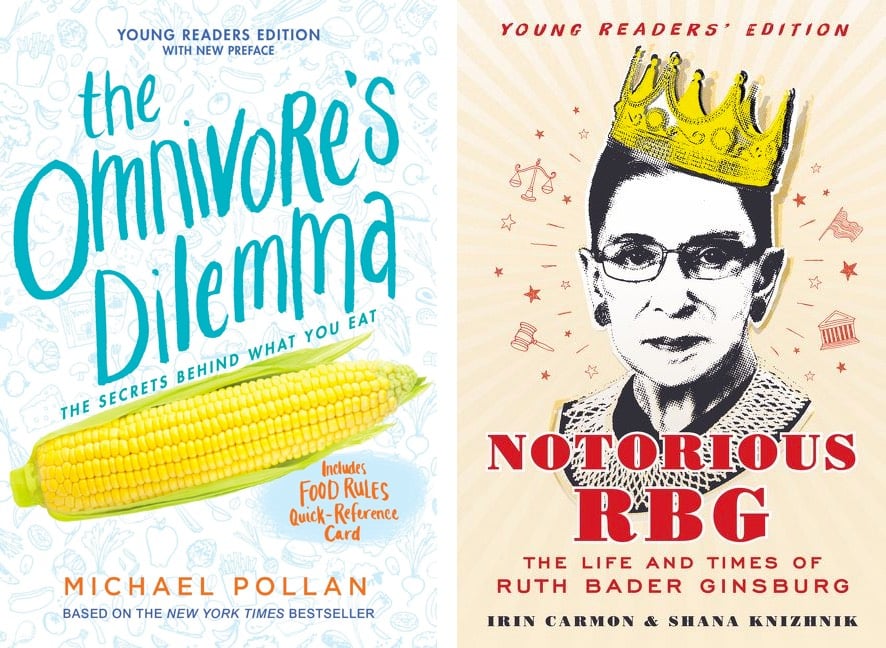
Lately I’ve been noticing that more and more authors seem to be adapting their adult nonfiction books for younger readers (typically for the middle grade set, ages 8-12). The young readers editions are shorter and often contain more illustrations, photos, graphs, and charts than their adult counterparts, distilling the story and information down into what would be in the movie versions of these books. Here are some of the young readers’ editions I’ve run across.
The Omnivore’s Dilemma: Young Readers Edition by Michael Pollan. “This young readers’ adaptation of Pollan’s famous food-chain exploration encourages kids to consider the personal and global health implications of their food choices.”
A Young People’s History of the United States: Columbus to the War on Terror by Howard Zinn (adapted by Rebecca Stefoff). “Zinn in the volumes of A Young People’s History of the United States presents a radical new way of understanding America’s history. In so doing, he reminds readers that America’s true greatness is shaped by our dissident voices, not our military generals.”
Notorious RBG Young Readers’ Edition: The Life and Times of Ruth Bader Ginsburg by Irin Carmon & Shana Knizhnik, “mixes pop culture, humor, and expert analysis for a remarkable account of the indomitable Ruth Bader Ginsburg: Heroine. Trailblazer. Pioneer.”
Before Columbus: The Americas of 1491 by Charles Mann. “A companion book for young readers based on 1491: New Revelations of the Americas Before Columbus, the groundbreaking bestseller by Charles C. Mann.” See also Mann’s 1493 for Young People: From Columbus’s Voyage to Globalization.
Hidden Figures Young Readers’ Edition by Margot Lee Shetterly, “the powerful story of four African-American female mathematicians at NASA who helped achieve some of the greatest moments in our space program”.
On the Origin of Species: Young Readers Edition by Charles Darwin (adapted by Rebecca Stefoff). “Meticulously curated to honor Darwin’s original text, this compelling edition also provides contemporary insight, photographs, illustrations, and more.” (Having tried to read the original text once, I might recommend this version for everyone who isn’t a biologist.)
Code Girls: The True Story of the American Women Who Secretly Broke Codes in World War II (Young Readers Edition) by Liza Mundy. “Due to the top secret nature of their accomplishments, these women have never been able to talk about their story — until now.”
I Am Malala: How One Girl Stood Up for Education and Changed the World by Malala Yousafzai. “In this Young Readers Edition of her bestselling memoir, which has been reimagined specifically for a younger audience and includes exclusive photos and material, we hear firsthand the remarkable story of a girl who knew from a young age that she wanted to change the world — and did.”
Unbroken (The Young Adult Adaptation): An Olympian’s Journey from Airman to Castaway to Captive by Laura Hillenbrand. “Driven to the limits of endurance, Zamperini would respond to desperation with ingenuity, suffering with hope and humor, brutality with rebellion. His fate, whether triumph or tragedy, would hang on the fraying wire of his will.”
How We Got To Now: Six Innovations That Made the Modern World by Steven Johnson. “This adaptation of his adult book and popular PBS series explores the fascinating and interconnected stories of innovations — like clean drinking water and electricity — that changed the way people live.”
Overview, Young Explorer’s Edition: A New Way of Seeing Earth by Benjamin Grant. “When astronauts look down at our planet and see its vibrant surface shining against the blackness of space, they experience the Overview Effect — a sense of awe, an awareness that everything is interconnected, and an overwhelming desire to take care of our one and only home.”
A 2000 interview with David Foster Wallace previously unpublished in English. “The internet is almost the perfect distillation of the American capitalist ethos, a flood of seductive choices.”
Genetic analysis of rare microbes leads to the development of a new “supra-kingdom” of life. “Hemimastigotes are more different from all other living things than animals are from fungi.”
Instagram influencers are selling Adobe Lightroom presets to their followers. Amazing how social media has turned so many people into wannabe Ansel Adamses.
Tungrus and the Chicken from Hell
Tungrus and the Chicken from Hell is a short film by Rishi Chandna about an Indian family who inexplicably have a pet rooster who terrorizes everyone in the apartment, including the cats. He shits on the floor, scratches up the furniture, wakes everyone with round-the-clock crowing.
If anybody wants to adopt a rooster, do your research. And, like all pets, be prepared for life to become hell.
There’s a focus pull right before the 10 minute mark that’s possibly one of the best cinematic moments you’ll see in film all year — it may just make you feel poignant about a rooster. (thx, anna)
How We Got to Now for Younger Readers
After hearing that the PBS series based on his bestselling book, How We Got to Now, was being watched by grade schoolers at home and in school, Steven Johnson has adapted the book into a version for young readers.
His fascinating account is organized into six topics: glass, cold, sound, clean, time, light. Johnson’s fresh exploration of these simple, single-syllable word concepts creates an endlessly absorbing story that moves from lightning strikes in the prehistoric desert to the herculean effort to literally raise up the city of Chicago to laser labs straight out of a sci-fi movie.
Totally getting this for my kids for Christmas. (Kids, if you’re reading this, act surprised, ok?)
Blame Fox News for Fake News, Not Facebook
In the Washington Post, Henry Farrell interviews Yochai Benkler, whose recent book with co-authors Rob Faris and Hal Robert, Network Propaganda: Manipulation, Disinformation, and Radicalization in American Politics, presents evidence that right-wing media functions in a completely different way than the rest of the media does.
On the right, audiences concentrate attention on purely right wing outlets. On the left and center audiences spread their attention broadly and focus on mainstream organizations. This asymmetric pattern holds for the linking practices of media producers. Both supply and demand on the right are insular and self-focused. On the left and center they are spread broadly and anchored by professional press.
These differences create a different dynamic for media, audiences, and politicians on the left and right.
We all like to hear news that confirms our beliefs and identity. On the left, outlets and politicians try to attract readers by telling such stories but are constrained because their readers are exposed to a range of outlets, many of which operate with strong fact-checking norms.
On the right, because audiences do not trust or pay attention to outlets outside their own ecosystem, there is no reality check to constrain competition. Outlets compete on political purity and stoking identity-confirming narratives. Outlets and politicians who resist the flow by focusing on facts are abandoned or vilified by audiences and competing outlets. This forces media and political elites to validate and legitimate the falsehoods, at least through silence, creating a propaganda feedback loop.
The authors also argue that Fox News is doing much more harm to our democracy in spreading false information than Facebook or Twitter.
The highly asymmetric pattern of media ecosystems we observe on the right and the left, despite the fact that Facebook and Twitter usage is roughly similar on both sides, requires that we look elsewhere for what is causing the difference.
Surveys make it clear that Fox News is by far the most influential outlet on the American right — more than five times as many Trump supporters reported using Fox News as their primary news outlet than those who named Facebook. And Trump support was highest among demographics whose social media use was lowest.
Our data repeatedly show Fox as the transmission vector of widespread conspiracy theories.
I’ve been beating this drum for awhile and still don’t know why this 2017 study that showed compelling evidence that Fox News moved the 2008 presidential election Republican vote share by 6.3% to the right all by itself isn’t a much bigger deal.
In other results, we estimate that removing Fox News from cable television during the 2000 election cycle would have reduced the overall Republican presidential vote share by 0.46 percentage points. The predicted effect increases in 2004 and 2008 to 3.59 and 6.34 percentage points, respectively. This increase is driven by increasing viewership on Fox News as well as an increasingly conservative slant.
In keeping with Benkler et al’s findings regarding media asymmetry, the study did not identify a similar swing to the left for MSNBC or CNN viewers.
The question is, what the heck do we do about Fox News? Shun Rupert Murdoch? Sleeping Giants and other groups have been effective in hamstringing other right-wing media sources like Breitbart (as well as some Fox News shows), but Fox News has worked hard to position itself as mainstream, so pressuring advertisers would be tough to muster support for. What about a boycott of other Fox properties? If the Disney sale goes through, those properties would include the Fox channel (home of The Simpsons, NFL games, college football, etc., The World Series), Fox Business News, and a number of sports channels (Fox Sports 1 & 2 and Fox Soccer Plus). Are people going to be willing to give up watching The World Series and The Super Bowl to put financial pressure on Fox? And my pals who do startups…are they going to refuse to go on Fox Business News promote their businesses? I have my doubts about that.
Network Propaganda is available on Amazon and also as a free PDF download here.
RIP, Pablo Ferro
Film & design legend Pablo Ferro died this weekend at the age of 83. Ferro was known for designing the iconic opening title sequences for Dr. Strangelove and Bullitt (among others).
He also designed what is probably my favorite movie trailer, for A Clockwork Orange:
I wrote about Ferro’s work with Stanley Kubrick in this post 10 years ago. From a piece by Steven Heller that I linked to in the post:
Kubrick wanted to film it all using small airplane models (doubtless prefiguring his classic space ship ballet in 2001: A Space Odyssey). Ferro dissuaded him and located the official stock footage that they used instead. Ferro further conceived the idea to fill the entire screen with lettering (which incidentally had never been done before), requiring the setting of credits at different sizes and weights, which potentially ran counter to legal contractual obligations. But Kubrick supported it regardless. On the other hand, Ferro was prepared to have the titles refined by a lettering artist, but Kubrick correctly felt that the rough hewn quality of the hand-drawn comp was more effective. So he carefully lettered the entire thing himself with a thin pen.
The Art of the Title also interviewed Ferro about the Strangelove opening credits.
The titles for Strangelove were last-minute; I didn’t have much time to produce it. It came up because of a conversation between Stanley and I. Two weeks after I finished with everything, he and I were talking. He asked me what I thought about human beings. I said one thing about human beings is that everything that is mechanical, that is invented, is very sexual. We looked at each other and realized — the B-52, refueling in mid-air, of course, how much more sexual can you get?! He loved the idea. He wanted to shoot it with models we had, but I said let me take a look at the stock footage, I am sure that [the makers of those planes] are very proud of what they did and, sure enough, they had shot the plane from every possible angle.
Update: The Art of the Title also did a huge three-part interview with Ferro as a career retrospective. Great deep dive into a substantial career.
How hackers are stealing high-profile Instagram accounts. “When reached for comment, Brooks replied by email: ‘becauze im a savage bitch Guciiiiii 4 lyyyffeee skrt skrt.’”
The Future of News on Smart Speakers

At Nieman Lab, Laura Hazard Owen checks in on whether and how people are consuming news on smart speakers and smart displays. It turns out, they aren’t, really:
Smart speaker news briefings didn’t get much love from users in this research. Here are some of the complaints Newman heard:
— Overlong updates — the typical duration is around five minutes, but many wanted something much shorter.
— They are not updated often enough. News and sports bulletins are sometimes hours or days out of date.
— Some bulletins still use synthesized voices (text to speech), which many find hard to listen to.
— Some updates have low production values or poor audio quality.
— Where bulletins from different providers run together, there is often duplication of stories.
— Some updates have intrusive jingles or adverts.
— There is no opportunity to skip or select stories.
Based on my experience with these devices and general trends in news and media consumption, I have a few predictions as to how this will change in the near future:
- Audio news updates will get shorter and more specialized. The New York Times using The Daily as a “flash briefing” is really the ne plus ultra of cramming content not designed for smart speakers into the space. I had to pull them as a news source because of it.
- Audio news updates will move from pull to push. Unless you put it on “do not disturb,” you’ll hear a news update just after it’s posted, rather than having to ask for it.
- In other words, autoplay is coming.
- Video will get more important as more of these devices add screens. And video offers all sorts of extra affordances and business models.
- All of these things will happen faster than the advertisements improving. That’ll happen last if it happens at all.
Inside the world of hacking sleep apnea machines. As we use more devices that collect more data, this trend is only going to grow
Hip-Hop’s Fragile Symbiosis With Pop Culture
![]()
For some reason, the only YouTube channels I subscribe to are about hip-hop (with one or two dead design vlogs thrown in), and most of the hip-hop reviews and discussion I consume happens there. Likewise, almost all the podcasts I listen to are about sports, and when I’m looking for sports content, I start with podcasts. Who knows how or why these things happen? When I was a media reporter, I’d have theories about these things. These days, I chalk most stuff up to contingency.
Anyways, a favorite show of mine is Dead End Hip Hop, or DEHH, which is a kind of Around the NBA-ish take on new and old music. It’s four guys, all about my age, who have musical touchstones in common with me and each other, who argue with each other about music. It’s brash and insider-y and a little hater-ish, and I love it.
In their latest episode, the DEHH crew and a couple of younger guests answer a reader question: What will hip-hop look like in twenty years? It turns into a thoughtful (and brash and insider-y and a little hater-ish) discussion of the history of popular music, generational change, the relationship between music, technology, and the broader culture, and the dangers of becoming too popular for too long:
The general consensus boils down to three things:
- Hip-hop has an unusually rich, symbiotic relationship with pop culture in a way other pop music forms just can’t match, with music and culture informing each other;
- The musical dominance of hip-hop has generally been bad for the quality of hip-hop, and the longer this dominance continues, the more degraded the music gets;
- There is no reason to expect this dominance to continue indefinitely, and every reason to expect it will be exchanged for another cultural form.
Now, hip-hop has some advantages. It’s unusually capacious, almost greedy, when it comes to culture. It’s not just music, but dance, fashion, slang, and visual art. Plus, when it comes to interacting with other forms of popular culture, you can pour almost anything into it and get hip-hop back out. (For instance, hip-hop was into superheroes before it was cool. And PS: superheroes’ days at the top are numbered, too.)
But is hip-hop really that much more resilient than jazz, or rock n’ roll, each of which had their turn leading the way before turning into something else besides the most popular music in the world? Seriously: jazz is looking at hip-hop with its eyes all the way to the side, along with boxing, musical theater, and smoking cigarettes.
The harder question to answer isn’t whether something will come next, but what it will look like. In the 90s, techno and dance music were legitimate heirs/threats to hip-hop; in comparison, EDM and what’s left of indie rock seem to be pretty insular corners rather than comers.
The coolest thing to imagine is the future evolution of hip-hop, even if it loses its spot on top of the music/culture heap, into a richer and more personal form of artistic expression. I hope we haven’t seen its full flourishing. But then again, I’m 39. That’s the kind of stuff I like. And the days of hip-hop caring about what guys my age like are waning, if not over.
The Curse of Winning “America’s Best Burger”
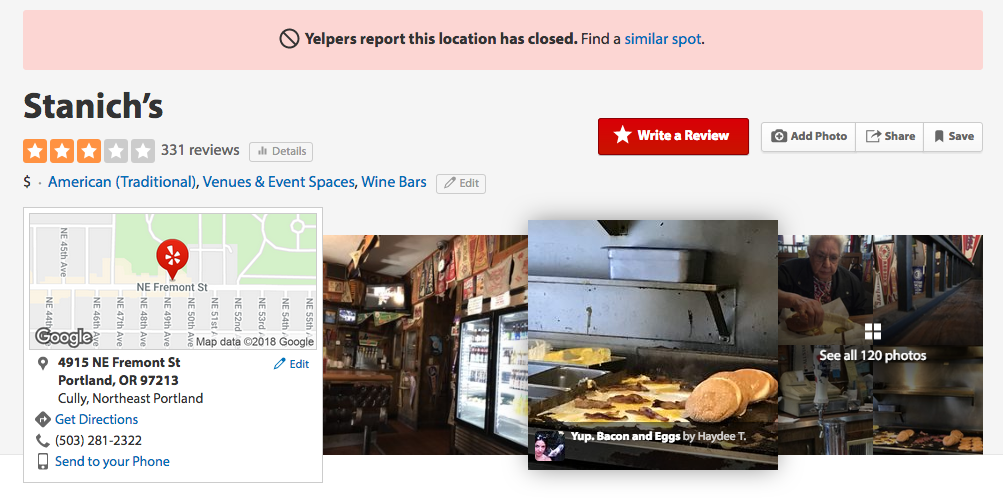
A surprising number of lottery winners will later tell you that winning the lottery was the worst thing that ever happened to them. It can be the same for many restaurants who win awards and suddenly get more attention than they bargained for, driving away loyal customers in favor of food tourists.
That’s what happened to Stanich’s, a burger joint in Portland, Oregon. Kevin Alexander, who had put Stanich’s on blast by naming it the best burger in America, explains the dynamic in a Thrillist essay titled “I Found the Best Burger Place in America. And Then I Killed It.”
Apparently, after my story came out, crowds of people started coming in the restaurant, people in from out of town, or from the suburbs, basically just non-regulars. And as the lines started to build up, his employees — who were mainly family members — got stressed out, and the stress would cause them to not be as friendly as they should be, or to shout out crazy long wait times for burgers in an attempt to maybe convince people to leave, and as this started happening, things fell by the wayside. Dishes weren’t cleared quickly, and these new people weren’t having the proper Stanich’s experience, and Steve would spend his entire day going around apologizing and trying to fix things. They might pay him lip service to his face, but they were never coming back so they had no problem going on Yelp or Facebook and denouncing the restaurant and saying that the burgers were bad. And then the health department came in and suggested they do some deep cleaning (he still got a 97 rating, he told me), and the combination of all of these factors led Stanich to close down the restaurant for what he genuinely thought would be two weeks.
He also quotes the New Orleans Times-Picayune’s Brett Anderson, who thinks social media and the internet has made things worse:
“Before Bourdain and Fieri and the proliferation of listicles, there was certainly a lot more internal hand-wringing around ‘do we share every last precious secret we have with our readers?’ But now in the social media age, there’s no incentive to withhold. It just takes one Anderson Cooper tweet, and your favorite po’ boy place is packed for months.” He tells the story of Willie Mae’s Scotch House, a soul food restaurant in the Treme neighborhood known for its fried chicken. “It was always delicious, but never really crowded,” he said. “But then it started appearing on all these national lists, and now, no matter the day, you’ve got to get there before 11am if you don’t want to wait two hours.”
There’s a certain amount of hipster wailing in this: almost every restaurant owner would rather the place be packed than empty, and tourist money spends just as well as local. But there really is a limit for some businesses, restaurants among them, to how large they can scale without, at a minimum, fundamentally changing their character. And in many cases, that character change isn’t possible. We’re just not built to become something else so quickly, especially when everything that made us successful in the first place has to be discarded along the way.
This isn’t just about restaurants. This is a parable.
PS: Rob Horning has a really good thread about this. Highlight:
lots of media/communication business models are now built with scale alone in mind; they are also built to assimilate anything into their distribution systems, regardless of whether scale will ruin them—they impose scale on fragile phenomena
Update: Matthew Singer at Willamette Week dug into this story further. It seems the owner’s personal and legal troubles were also to blame:
On April 18, 2014, Stanich was arrested for choking his then-wife in front of their then-teenage son at their home in Northeast Portland.
Documents show his wife, then 57, had been a manager at Stanich’s for 19 years before being diagnosed with stage 4 breast cancer.
Stanich pleaded no contest to charges of misdemeanor harassment and strangulation, and was sentenced to four years of probation.
He was prohibited from owning a gun or contacting his wife. He was required to undergo treatment for his drinking, barred from consuming alcohol and, in a stiff prohibition for a bar owner, prohibited from entering establishments that primarily serve alcohol, except for work.
The Wes Anderson Alphabet
Abbie Paulhus is selling copies of this great illustrated poster she made featuring a Wes Anderson alphabet on her Etsy shop.
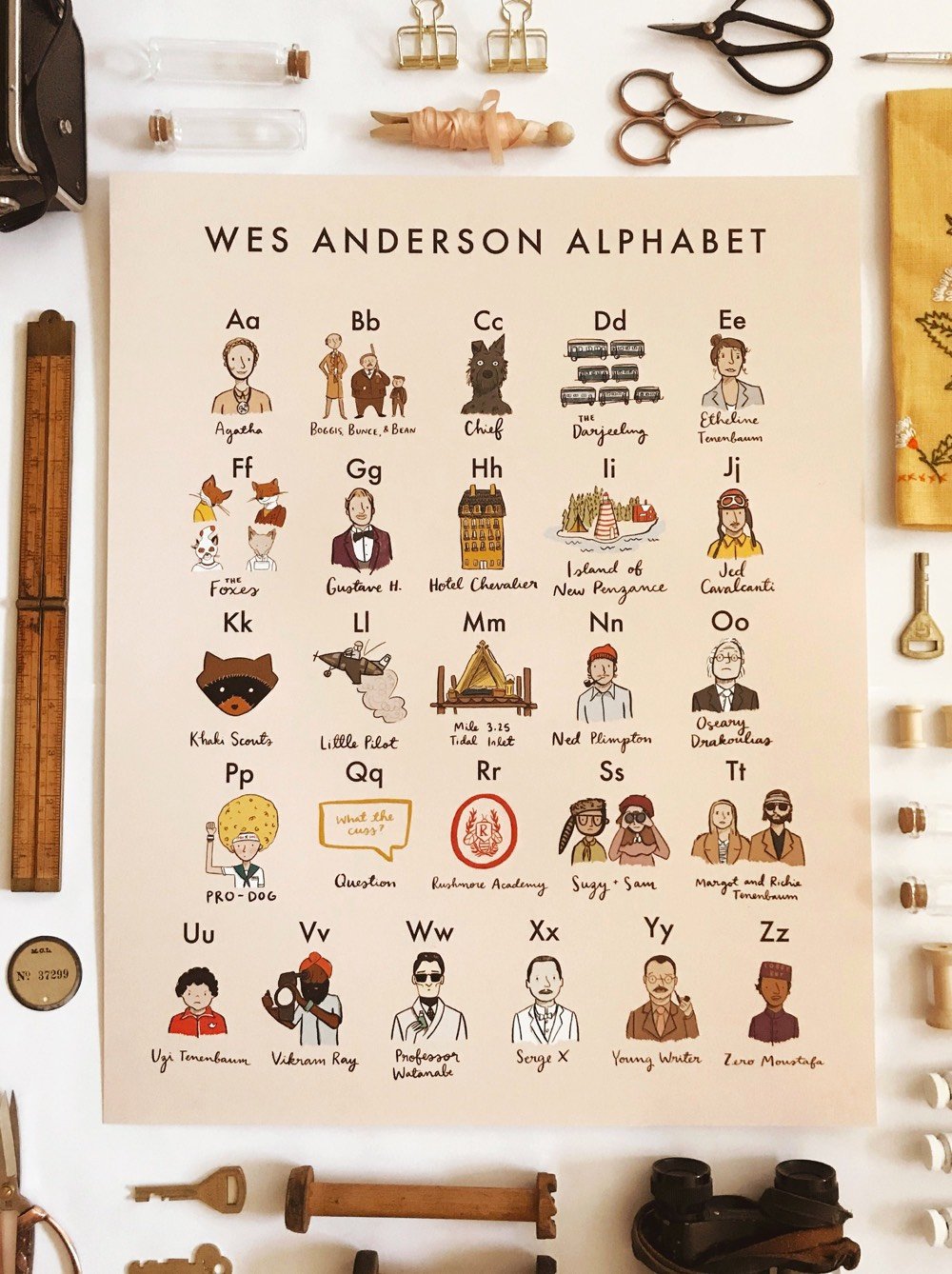
It features people, places, and objects from many of Anderson’s films (I didn’t see any Bottle Rocket references): B is for Boggis, Bunce, and Bean, N is for Ned Plimpton, and T is for Margot and Richie Tenenbaum.
Making Maps and Watching Weather On Planets Like Ours

A team of astronomers believe theyve found an exoplanet orbiting Barnards Star, in the solar system closest to ours. The evidence is uncertain, but if its there, its about three times the size of Earth, and orbits much closer to the much dimmer star. This puts it near the snow line, where terrestrial planets like ours are found. This also means its close enough to us and the right distance from our star where we can take a really good look at it. From the paper in Nature:
The candidate planet around Barnards star is a cold super-Earth, with a minimum mass of 3.2 times that of Earth, orbiting near its snow line (the minimum distance from the star at which volatile compounds could condense). The combination of all radial-velocity datasets spanning 20 years of measurements additionally reveals a long-term modulation that could arise from a stellar magnetic-activity cycle or from a more distant planetary object. Because of its proximity to the Sun, the candidate planet has a maximum angular separation of 220 milliarcseconds from Barnards star, making it an excellent target for direct imaging and astrometric observations in the future.
On Twitter, Charlie Loyd wrote this thread, and I cant stop thinking about it:
Assuming its confirmed, this means both the closest star systems have planets. (Okay, the three closest if you count the one were in. Very good.) Thats delightful. But also: as the abstract points out, this new one is an excellent candidate for direct imaging. Check my math, but reasonably conservatively, I think it should be about 0.3 nrad (1.7e-8) across from here.
Theoretically, to resolve that in visible wavelengths, you need a ludicrously large telescope. But! If you think hard enough about the wavefronts of the light that they see, you can use a set of spread-out smaller telescopes to work as one big one. This is an interferometric array, and last I checked the best one was CHARA, in the hills over Los Angeles (https://t.co/Rr3zPT1gpR). It can resolve down to about 1 nrad (5.5e-8). Its seen sunspots on other stars.
So we dont have anything that can see features on the face of the new planet say, continents and weather systems, if any. Even a 0.3 nrad telescope couldnt do that. But were closer than you might think.
If we fund it CHARA was founded with @NSF money odds are fair that well map alien worlds and watch alien weather in our lifetimes. Okay, have a nice day.
What a fantastic project that would be. And if were ever going to send a probe to or make a first-person visit a world outside our solar system, it would be an essential one. Why do space science, if not for things like this?
Art on the Moon
The NY times recently asked eight artists what art projects they would do if they could fly to the Moon. Here’s Kara Walker’s answer:
Gil Scott Heron wrote that famous poem, “Whitey on the Moon”: “The man just upped my rent last night / Cause whitey’s on the moon / No hot water, no toilets, no lights / But whitey’s on the moon.”
I got thinking about a moon colony, which plenty of people have talked about pretty seriously over the years. So what I’d do is this: For every female child born on Earth, one sexist, white supremacist adult male would be shipped to the moon. They could colonize it to their heart’s content, and look down from a distance of a quarter-million miles. It’s a monochrome world up there; probably they’d love it. The colony would be hermetically sealed. And the rest of us could enjoy the sight of them from a safe distance. Maybe there could be some kind of selection ritual involved, something to do with menstruation and the tides — a touch of nature, to add a bit of irony justice to the endeavor.
For the supremacists, maybe traveling so far from home would help inspire a different worldview. And for the rest of us down on Earth, perhaps this is an opportunity to focus on the nature of our home planet with the same dreamy reverence we once reserved for the moon.
Here’s Scott-Heron’s Whitey on the Moon. In contrast, architect Daniel Libeskind would turn the Moon into a square by painting part of it black:
My son Noam is an astrophysicist at the Leibniz Institute in Germany, and we did some calculations about how it could work. We thought the best way would be to paint sections of it black, so they no longer reflect the sun’s light. To account for the curvature, you’d need to paint four spherical caps on the moon’s surface. That would create a kind of frame that looks square when you see it from earth.
James Turrell, the Video Game
Designer Jacopo Colò has made a video game that allows you to spend an hour inside a 2013 James Turrell installation, The Color Inside.
Turrell’s work is all about the fundamental materials: space, time and light, and is usually focused on permanent installations. His most famous works are the Skyspaces. A Skyspace is (most of the times) a room with a hole in the ceiling that allows to see the sky above, with nothing in between. At specific times during the day — at sunrise and sunset — a hidden strip of LED lights color the room, rotating trough the whole color spectrum. And if during the day the hole in the ceiling simply frames the sky, during the light show, filtered through a cloud of colored light, the view of the sky is altered. The sky can become pink, green, deep blue. It’s a beautiful spectacle.
Here’s a sped-up video that shows the, uh, “game play”:
This Holiday Ad Featuring Elton John Might Make You Cry
Sure, I know this is a television commercial for a UK department store and therefore should be afforded a certain level of emotional detachment, but only the most cynical folks out there will still be stone-faced at the end of this holiday advert starring Elton John.
After watching it, I thought back to my childhood for a gift that turned out to be more than just a gift. The closest I could come is a telescope1 my dad got me when I was maybe 8 or 9. While I didn’t grow up to be a celebrated astrophysicist or anything like that, that telescope solidified my love of science, encouraged my curiosity, and fostered my growing worldview that the universe could be wondrous without being magical. I could see sunspots on the Sun, the rings of Saturn, the moons of Jupiter, and shadows cast by craters on the Moon with my own eyes just as well as I could see the blades of grass right in front of me. Those objects moved around out there according to the same simple physical laws as the Earth moved, as did the baseball my dad & I played catch with, the rocket that shepherded astronauts to the Moon, and the waves on the ocean.
Seeing that all of those things were tied together across massive distances by a single system made a powerful impression on me. There was no need to say “well, I don’t know how that works so it must be some magical force or being”. I could go to a book and look up how Saturn’s rings formed, where the Moon’s craters came from, and why we only ever see one side of the Moon from Earth. And if the answer to a question didn’t exist, you could take that curiosity and go find out yourself, no permission necessary, and contribute to the collective human understanding of our existence. I switched away from a career in science shortly after entering grad school, but the spirit of scientific inquiry and curiosity has never left me or my work. I’ve loved being a designer, technologist, writer, and curator who still thinks like a scientist, like a little kid peering through his telescope at the rings of Saturn for the very first time and wanting to know everything about them.
The telescape was a Jason model 311. I was old enough to know that it wasn’t made specifically for me, that didn’t stop me from feeling a little bit special owning a telescope with my actual name on it.↩
A 31-km-wide asteroid impact crater has been found under the Greenland ice sheet. Evidence suggests the impact could have occurred just 13,000 years ago.
Getting people to talk earnestly about things they are proud of doing is tough to do, which is why oral histories are often so good. This one about Nirvana’s Unplugged taping is particularly great.
The Remarkable Brain Waves of High Level Meditators
What’s going on in the brains of people who meditate? Anecdotal evidence suggests that meditation does something to people’s minds and bodies…quiets and calms them. In this video, Daniel Goleman reports on research done by his colleague Richard Davidson, a neuroscientist at the University of Wisconsin–Madison. Davidson brought a number of “Olympic level meditators” into his lab and hooked them up to a brain scanner. He found that the brains of these expert meditators have different brain wave patterns than the rest of us.
Perhaps the most remarkable findings in the Olympic level meditators has to do with what’s called a gamma wave. All of us get gamma for a very short period when we solve a problem we’ve been grappling with, even if it’s something that’s vexed us for months. We get about half second of gamma; it’s the strongest wave in the EEG spectrum. We get it when we bite into an apple or imagine biting into an apple, and for a brief period, a split-second, inputs from taste, sound, smell, vision, all of that come together in that imagined bite into the apple. But that lasts very short period in an ordinary EEG.
What was stunning was that the Olympic level meditators, these are people who have done up to 62,000 lifetime hours of meditation, their brainwave shows gamma very strong all the time as a lasting trait just no matter what they’re doing. It’s not a state effect, it’s not during their meditation alone, but it’s just their every day state of mind. We actually have no idea what that means experientially. Science has never seen it before.
Goleman and Davidson have written more about how meditation affects the mind and body in their book, Altered Traits.
Sweeping away common misconceptions and neuromythology to open readers’ eyes to the ways data has been distorted to sell mind-training methods, the authors demonstrate that beyond the pleasant states mental exercises can produce, the real payoffs are the lasting personality traits that can result. But short daily doses will not get us to the highest level of lasting positive change — even if we continue for years — without specific additions. More than sheer hours, we need smart practice, including crucial ingredients such as targeted feedback from a master teacher and a more spacious, less attached view of the self, all of which are missing in widespread versions of mind training.
There’s that pesky deliberate practice popping up again.
Batkid Is Now Cancer-Free After Stealing Everyone’s Heart In San Francisco. I’m not crying, you’re crying!
Facebook’s Tipping Point of Bad Behavior?
The NY Times has published a long piece about how Facebook has responded (and failed to respond) to various crises over the past three years: Delay, Deny and Deflect: How Facebook’s Leaders Fought Through Crisis. It does not paint a very flattering portrait of the company. This part is particularly damning (italics mine):
When Facebook users learned last spring that the company had compromised their privacy in its rush to expand, allowing access to the personal information of tens of millions of people to a political data firm linked to President Trump, Facebook sought to deflect blame and mask the extent of the problem.
And when that failed — as the company’s stock price plummeted and it faced a consumer backlash — Facebook went on the attack.
While Mr. Zuckerberg has conducted a public apology tour in the last year, Ms. Sandberg has overseen an aggressive lobbying campaign to combat Facebook’s critics, shift public anger toward rival companies and ward off damaging regulation. Facebook employed a Republican opposition-research firm to discredit activist protesters, in part by linking them to the liberal financier George Soros. It also tapped its business relationships, lobbying a Jewish civil rights group to cast some criticism of the company as anti-Semitic.
Are you fucking kidding me? Facebook paid to promote the right-wing & anti-Semitic conspiracy theory that George Soros pays protestors? Shame on you, Mark Zuckerberg, Sheryl Sandberg, and the rest of Facebook leadership team. Legitimizing this garbage actively hurts our democracy. On Twitter, The Guardian’s senior tech reporter Julia Carrie Wong gets at what is so wrong and different about this behavior:
There’s something about this Soros story that feels significantly different than the usual Facebook scandal. Most recent negative Facebook stories are issues relating to challenges of scale and a tendency toward passivity.
Facebook’s standard playbook is to admit that they made a mistake by being slow to react, remind us of their good intentions, then promise to do better. It’s the aw geez who woulda thought in the dorm room that we would have to deal with all these tricky issues defense.
This has been very effective for a company that still gets the benefit of the doubt. No one would ever suggest that Facebook *wanted* to bring about the ethnic cleansing of Rohingya or lynchings in rural Indian villages. They just were in a little over their heads.
But this Soros thing is different. This is no passive failure. It’s a malevolent action taken against groups who criticize Facebook for things that Facebook admits it has failed at. It takes advantage of and contributes to the most poisonous aspects of our public discourse.
It makes you wonder if the “ah geez” thing has just been an act all along. Mike Monteiro, who speaks and writes about ethics in the design profession, is surprised that Facebook’s employees haven’t spoken out more.
What surprises me is that Facebook employees are still at their desks after finding that their company was actively attempting to discredit activists. No doubt some of them are shook. No doubt some of them will make public statements against their company’s policy. And those are needed. No doubt there will be internal spirited conversations within the company. And those are needed as well. But there won’t be a walk-out. I say this hours after the article was released. But I doubt that I’ll have to come back to this paragraph and revise it. I wish I wasn’t so sure of that. But I am.
25 Reasons to Keep on Making Stuff in Times of Crisis
In an epic GIF-laden thread on Twitter, author Chuck Wendig lays out “25 REASONS TO KEEP ON MAKING STUFF IN THIS TIME OF RAMPANT ASSHOLERY”.
1. Because you need to escape the fuckery, and what you make is a door. A book, a piece of art, even an excellent meal — it’s a doorway out. It’s the tunnel dug out behind the Rita Hayworth poster in your prison cell.
3. Because creation is #resistance. Making things is additive. And in a subtractive time such as this, you must balance the void with its opposite. That is an act of defiance. And we need more defiance.
9. Because it’s therapy. It’s therapy first for you, and if you share it, eventually for us, too.
20. Because when you make stuff, you improve yourself. And we need you in fighting shape. YOU MUST BE A WHETTED BLADE READY TO SLICE THROUGH SHENANIGANS, CHICANERY, AND GARBAGE.
24. Because art is beauty. Stories, poetry, craftwork, food, it’s all beautiful and this ugly world needs a dollop of beauty. There is beauty in both the act and the result of making stuff. So kick the shitstorm out of the sky with an aggressive rainbow counterattack.
See also Austin Kleon’s upcoming book Keep Going (and related talk) and How to Be Productive in Terrible Times.
Better Living Through Non-Zero Sum Games
One of the very few books I think about all the time is Robert Wright’s Nonzero: The Logic of Human Destiny. Paras Chopra tweeted out a good summary of the book a couple of weeks ago.
The basic premise of the book is that history has a direction which favors co-operation and non-zero sum games, and that causes an increase in complexity. Starting from the first replicating molecule which co-operated with an outer layer to form first proto-cell, evolutionary and cultural history is full of examples where two entities come together to survive and progress a lot more than they would have done individually. This co-operative entity fares much better than two individual entities because of specialization. If two entities are in the same boat — that they win together or lose together — then trust is implicit. In a non-zero sum game, trust causes entities to focus on what they do best.
This type of win-win cooperation in biology is mirrored in the cultural world:
Out of all technologies, perhaps information technologies are most conducive to enabling more non-zero sum games. As writing skill spread, more and more people entered into simple written contracts that helped people co-operate and specialize. Perhaps the biggest information technology was money and the corresponding meme of capitalism that helped people express their desires clearly and others to fulfil those desires. We have a thousand different types of shoes because shoe-makers today do not have to worry about baking their own bread. This “trust” in the larger entity of commerce helps everyone progress.
Nonzero is an intriguing lens through which to view current events (which is why it’s often in my thoughts). As Chopra notes, cooperation isn’t always the norm…Trumpist Republicans and Brexit proponents are both veering towards the zero sum end of the spectrum and I don’t think it will work out well for either country in the long run.
A review & behind-the-scenes of a art exhibition curated by Wes Anderson & Juman Malouf for Vienna’s Kunsthistorisches Museum. “These are things that would not normally be shown…”
Puzzle Montage Art
Taking advantage of the fact that puzzle manufacturers typically use the same cut patterns to make many different puzzles, Tim Klein uses the interchangeable pieces to create surrealist mashups of puzzles.



Artist Alma Haser used this technique for her Within 15 Minutes project in which she melded identically cut puzzles of portraits of identical twins.

(via @john_overholt)
A previously undiscovered galaxy has been found very close to the Milky Way. Its detection was hindered by its low light & density and hiding place behind the Milky Way disc.
The Ubiquitous Collectivism that Enables America’s Fierce Individualism
Forbes recently released their 2019 “30 Under 30” list of “the brashest entrepreneurs across the United States and Canada” who are also under 30 years old. A persistent criticism of the list is that many of the people on it are there because of family or other social advantages. As Helen Rosner tweeted of last year’s list:
My take is: all 30 Under 30 lists should include disclosure of parental assets
In a piece for Vox, Aditi Juneja, creator of the Resistance Manual and who was on the 30 Under 30 list last year, writes that Forbes does ask finalists a few questions about their background and finances but also notes they don’t publish those results. Juneja goes on to assert that no one in America is entirely self-made:
Most of us receive government support, for one thing. When asked, 71 percent of Americans say that they are part of a household that has used one of the six most commonly known government benefits — Social Security, Medicare, Medicaid, food stamps, welfare, or unemployment benefits.
And many people who benefit from government largesse fail to realize it: Sixty percent of Americans who claim the mortgage-interest deduction, which applies to homeowners, say they have never used a government program. If you’ve driven on public roads, gone to public school, or used the postal service as part of your business — well, we all rely on collective infrastructure to get ahead.
And then she lists some of the ways in which she has specifically benefitted from things like government programs, having what sounds like a stable home environment, and her parents having sufficient income to save money for her higher education.
I went to public schools through eighth grade. My parents were able to save for some of my college costs through a plan that provides tax relief for those savings. I stayed on my parent’s health insurance until I was 26 under the Affordable Care Act. I have received the earned income tax credit, targeted at those with low or moderate income. I took out federal student loans to go to law school.
Juneja’s piece reminds me of this old post about how conservatives often gloss over all of the things that the government does for its citizens:
At the appropriate time as regulated by the US congress and kept accurate by the national institute of standards and technology and the US naval observatory, I get into my national highway traffic safety administration approved automobile and set out to work on the roads build by the local, state, and federal departments of transportation, possibly stopping to purchase additional fuel of a quality level determined by the environmental protection agency, using legal tender issed by the federal reserve bank. On the way out the door I deposit any mail I have to be sent out via the US postal service and drop the kids off at the public school.
And also of mayor Pete Buttigieg’s idea of a more progressive definition of freedom:
Or think about the idea of family, in the context of everyday life. It’s one thing to talk about family values as a theme, or a wedge — but what’s it actually like to have a family? Your family does better if you get a fair wage, if there’s good public education, if there’s good health care when you need it. These things intuitively make sense, but we’re out of practice talking about them.
I also think we need to talk about a different kind of patriotism: a fidelity to American greatness in its truest sense. You think about this as a local official, of course, but a truly great country is made of great communities. What makes a country great isn’t chauvinism. It’s the kinds of lives you enable people to lead. I think about wastewater management as freedom. If a resident of our city doesn’t have to give it a second thought, she’s freer.
Lists like 30 Under 30 reinforce the idea of American individualism at the expense of the deep spirit & practice of collectivism that pervades daily American life. America’s fierce individuals need each other. Let’s celebrate and enable that.
“Massachusetts offers a model for dealing with gun violence that the rest of the country could follow.” Guns in the state are registered & licensed, like cars & driving privileges.
The Odyssey of Reading “The Odyssey”
In this clip from the TV show Articulate (which airs on PBS), host Jim Cotter talks with Emily Wilson and Daniel Mendelsohn about The Odyssey, different versions of the self, translations, and more.
Emily Wilson: What is it to be in a family? What is it to be a person over time? For me, that’s one of the most fascinating questions just in general, but then The Odyssey speaks to that question of, am I the same person that I was 20 years ago? Am I the same person in America that I was in the UK? Is Ulysses the same person when he’s on the battlefield, verses when he’s with his son, verses when he’s with his wife? What is it to be the same or to be different? How do we treat people who are different from us? It’s a poem that’s about diaspora, immigration, emigration, travel, belonging, being at different places geographically and also being at different places spiritually and psychologically.
The kids and I have been reading Wilson’s translation of The Odyssey over the past several months together. I wasn’t quite sure if they’d like it or if they’d get bored, but they’ve been engaged the whole time and now that we’re nearing the end, everyone is eager to see how the story plays out and a little sad that it’s ending.
We probably won’t be reading Mendelsohn’s book next, but I might have to add An Odyssey: A Father, a Son, and an Epic to my reading stack:
When eighty-one-year-old Jay Mendelsohn decides to enroll in the undergraduate Odyssey seminar his son teaches at Bard College, the two find themselves on an adventure as profoundly emotional as it is intellectual. For Jay, a retired research scientist who sees the world through a mathematician’s unforgiving eyes, this return to the classroom is his “one last chance” to learn the great literature he’d neglected in his youth — and, even more, a final opportunity to more fully understand his son, a writer and classicist. But through the sometimes uncomfortable months that the two men explore Homer’s great work together — first in the classroom, where Jay persistently challenges his son’s interpretations, and then during a surprise-filled Mediterranean journey retracing Odysseus’s famous voyages — it becomes clear that Daniel has much to learn, too: Jay’s responses to both the text and the travels gradually uncover long-buried secrets that allow the son to understand his difficult father at last.
Monsoon V
Mike Olbinski is back with another of his jawdropping storm chasing videos. I find clouds endlessly fascinating — it seems like there’s always something new to consider while watching these kinds of videos. This time around, I noticed how the clouds in several instances actually “opened up” when it started to rain, like a hatch that finally succumbed to the pressure of all that water pushing down on it. (Check out 1:38 for a particularly clear instance.)
An Infinite Icosahedral Puzzle of the Earth

Nervous System designed this puzzle of Earth so that it can be put together in a variety of different ways.
This puzzle is based on an icosahedral map projection and has the topology of a sphere. This means it has no edges, no North and South, and no fixed shape. Try to get the landmasses together or see how the oceans are connected. Make your own maps of the earth!
The Girl with the Grande Iced Latte



I seemingly cannot get enough of contemporizing old paintings and works of art. Here, from Rodrigo Pinheiro, are some familiar young people hanging out with modern beverages.
See also Girl with a Pearl Earring and Point-and-Shoot Camera and Art History Comes to Life.
A Song Map of the United States


Design studio Dorothy has produced a poster of a map of the United States where all the place names are song titles.
Some of our favourite song choices are the ones which require you to think a little harder about connections, such as Space Oddity (David Bowie) which signposts Cape Canaveral, After the Gold Rush (Neil Young) which references Sutter’s Mill, and Homecoming (Kanye West) which is placed near the rapper’s home town of Chicago.
The map is accompanied by a Spotify playlist of most of the songs used…over 61 hours of music in total.
How Fascism Works
Yale philosopher Jason Stanley recently published a book called How Fascism Works: The Politics of Us and Them. Sean Illing interviewed him for Vox about what fascism is and isn’t and whether Trump is practicing fascist politics (spoiler alert: yes). I found this bit about how America is particularly susceptible to fascism interesting (italics mine…that is an amazingly succinct paragraph about American culture):
Well, the Ku Klux Klan deeply affected Adolf Hitler. He explicitly praised the 1924 Immigration Act, which severely limited the number of immigrants allowed to enter the US, as a useful model.
The 1920s and the 1930s was a very fascist time in the United States. You’ve got very patriarchal family values and a politics of resentment aimed at black Americans and other groups as internal threats, and this gets exported to Europe.
So we have a long history of genocide against native peoples and anti-black racism and anti-immigration hysteria, and at the same time there’s a strain of American exceptionalism, which manifests as a kind of mythological history and encourages Americans to think of their own country as a unique force for good.
This doesn’t make America a fascist country, but all of these ingredients are easily channeled into a fascist politics.
This has been on my mind lately; here’s what I wrote a couple of weeks ago, reflecting on a trip to Berlin:
With overt anti-Semitism growing in the US (as well as other things like the current administration’s policies on immigration and jailing of children in concentration camps), it’s instructive to compare the German remembrance of the Holocaust to America’s relative lack of public introspection & remembrance about its dark history.
In particular, as a nation the US has never properly come to terms with the horrors it inflicted on African Americans and Native Americans. We build monuments to Confederate soldiers but very few to the millions enslaved and murdered. Our country committed genocide against native peoples, herded them onto reservations like cattle, and we’re still denying them the right to vote.
See also Umberto Eco’s 14 Features of Eternal Fascism.
Update: In a video for the NY Times called Is President Trump Fascist?, Stanley goes over the three elements that are always present when fascism takes hold of a country.
Open Culture has a good summary of the video if you prefer to read.
Fascist leaders sow division; they succeed by “turning groups against each other,” inflaming historical antagonisms and ancient hatreds for their own advantage. Social divisions in themselves-between classes, religions, ethnic groups and so on-are what we might call pre-existing conditions. Fascists may not invent the hate, but they cynically instrumentalize it: demonizing outgroups, normalizing and naturalizing bigotry, stoking violence to justify repressive “law and order” policies, the curtailing of civil rights and due process, and the mass imprisonment and killing of manufactured enemies.
The intricate carving on the Pylos Combat Agate is centuries ahead of its time. “The representation of the human body is at a level of detail and musculature that one doesn’t find again until the classical period of Greek art 1,000 years later.”
Good summary of recent genetic research on how the Americas were peopled. Rather than an orderly north-to-south settling, people moved around…and quickly too.
Jazz Deconstructed: John Coltrane’s “Giant Steps”
A new episode of Estelle Caswell’s Earworm series is always cause for celebration. In this one, Caswell examines the title track off John Coltrane’s “Giant Steps” album and what makes it so challenging to play & rewarding to listen to.
John Coltrane, one of jazz history’s most revered saxophonists, released “Giant Steps” in 1959. It’s known across the jazz world as one of the most challenging compositions to improvise over for two reasons - it’s fast and it’s in three keys. Braxton Cook and Adam Neely give me a crash course in music theory to help me understand this notoriously difficult song, and I’m bringing you along for the ride. Even if you don’t understand a lick of music theory, you’ll likely walk away with an appreciation for this musical puzzle.
This is me actually walking away with that new appreciation.
How AI Agents Cheat
This spreadsheet lists a number of ways in which AI agents “cheat” in order to accomplish tasks or get higher scores instead of doing what their human programmers actually want them to. A few examples from the list:
Neural nets evolved to classify edible and poisonous mushrooms took advantage of the data being presented in alternating order, and didn’t actually learn any features of the input images.
In an artificial life simulation where survival required energy but giving birth had no energy cost, one species evolved a sedentary lifestyle that consisted mostly of mating in order to produce new children which could be eaten (or used as mates to produce more edible children).
Agent kills itself at the end of level 1 to avoid losing in level 2.
AI trained to classify skin lesions as potentially cancerous learns that lesions photographed next to a ruler are more likely to be malignant.
That second item is a doozy! Philosopher Nick Bostrom has warned of the dangers of superintelligent agents that exploit human error in programming them, describing a possible future where an innocent paperclip-making machine destroys the universe.
The “paperclip maximiser” is a thought experiment proposed by Nick Bostrom, a philosopher at Oxford University. Imagine an artificial intelligence, he says, which decides to amass as many paperclips as possible. It devotes all its energy to acquiring paperclips, and to improving itself so that it can get paperclips in new ways, while resisting any attempt to divert it from this goal. Eventually it “starts transforming first all of Earth and then increasing portions of space into paperclip manufacturing facilities”.
But some of this is The Lebowski Theorem of machine superintelligence in action. These agents didn’t necessarily hack their reward functions but they did take a far easiest path to their goals, e.g. the Tetris playing bot that “paused the game indefinitely to avoid losing”.
Update: A program that trained on a set of aerial photographs was asked to generate a map and then an aerial reconstruction of a previously unseen photograph. The reconstruction matched the photograph a little too closely…and it turned out that the program was hiding information about the photo in the map (kind of like in Magic Eye puzzles).
We claim that CycleGAN is learning an encoding scheme in which it “hides” information about the aerial photograph x within the generated map Fx. This strategy is not as surprising as it seems at first glance, since it is impossible for a CycleGAN model to learn a perfect one-to-one correspondence between aerial photographs and maps, when a single map can correspond to a vast number of aerial photos, differing for example in rooftop color or tree location.
“Our Planet”, a Nature Documentary Series from David Attenborough & Netflix
It looks like Netflix has sifted through their data and determined subscribers cannot get enough of the Planet Earth and Blue Planet nature series, so they’re making their own. With David Attenborough. The teaser trailer for Our Planet borrows heavily from Planet Earth (fonts & music are similar) but is light on the details, aside from the launch date: April 5, 2019.
Update: The full trailer is out, which I’ve embedded above. Here’s the previous teaser trailer:
The Our Planet series will consist of 8 episodes filmed across 50 countries. April 5 is soooon!
A Vote for Every Citizen
Perhaps the most heartening election results this week was Florida’s 60 percent-plus approval of Amendment 4, restoring voting rights to people convicted of a felony statewide. It re-extends the franchise to over a million people, reversing a policy that’s had brutal effects nationwide, but maybe nowhere more than Florida, one of the most populous states with one of the strictest disenfranchisement policies.
There’s an irony here, as it’s likely that if those citizens had had the right to vote in 2018, Florida’s still-contested elections for governor and senator would likely have been clean wins for Democrats. This means that over a fifth of Republican voters in this election also voted to overturn a policy that almost singlehandedly kept Republicans in power. All the other voter suppression policies deserve a little credit too, but this is the big one. And obviously, the Gillum and Nelson campaigns and other organizers deserve a lot of credit for getting Democrats, Independents, and some Republicans to cross over and vote on this issue. But what do we make of those crossover voters? What do we make of a state where the governor is sending police to keep votes from being counted after 60 percent of its citizens affirmed the principle that every citizen’s vote should be counted?
There’s probably a fraction of idealists, who know full well they’re hurting their own party’s chances, but voted yes anyway. I suspect, however, that there’s an even larger fraction who didn’t grasp the partisan implications of a yes vote — who don’t know (and were never meant to know) that their party’s control of the state rested almost completely on voter disenfranchisement, in all its forms. It’s invisible to them. It was designed to be invisible, and huge chunks of the press has played along, covering disenfranchisement sporadically if at all. They voted yes because they were never meant to know how much it mattered.
I also think of Michigan, my home state, where voter registration, early voting, and anti-gerrymandering measures passed with larger margins than either the Democratic governor or Senator received. These Republican voters, too, either didn’t know or didn’t care that their power in the state stems almost completely from gerrymandering and restrictions on the ability to vote. It suggests that even in the purplest states, where fighting between the parties is the fiercest and often the most arcane, there’s much more support for widespread voting rights among the electorate than there is in the parties who’ve sought to use restrictions on voting as a weapon.
What if, as Alex Pareene tweeted, Democrats and voting rights advocates pushed nationwide for “a plainly worded Constitutional amendment guaranteeing every citizen a right to vote”? No carve-outs, no exceptions, no states playing tricks. (Do you keep the restriction to the age of majority, i.e., 18+? Maybe, maybe not; I don’t know actually!)
Imagine how transformative that would be. Imagine how craven every politician who opposed this amendment would be. A vote for every citizen. And as Alex writes, it’s a short step from this idea to genuine proportionate representation, a true popular vote for the Presidency, full voting rights for Puerto Rico and all the other territories. With one stroke, you sweep so much of the anti-democratic vestiges of the Constitution away, and make the United States something closer to a true democracy.
I think it’s one of the most exciting ideas I’ve ever heard. I think it’s something we’re ready for. I think it’s something we badly need. What else is there to say?
NASA’s Voyager 2 could be nearing interstellar space. It would join Voyager 1 as the only man-made objects to leave the cozy confines of solar system.
Why Doctors Hate Their Computers
Nobody writes about health care practice from the inside out like Atul Gawande, here focusing on an increasingly important part of clinical work: information technology.
A 2016 study found that physicians spent about two hours doing computer work for every hour spent face to face with a patient—whatever the brand of medical software. In the examination room, physicians devoted half of their patient time facing the screen to do electronic tasks. And these tasks were spilling over after hours. The University of Wisconsin found that the average workday for its family physicians had grown to eleven and a half hours. The result has been epidemic levels of burnout among clinicians. Forty per cent screen positive for depression, and seven per cent report suicidal thinking—almost double the rate of the general working population.
Something’s gone terribly wrong. Doctors are among the most technology-avid people in society; computerization has simplified tasks in many industries. Yet somehow we’ve reached a point where people in the medical profession actively, viscerally, volubly hate their computers.
It’s not just the workload, but also what Gawande calls “the Revenge of the Ancillaries” — designing software for collaboration between different health care professionals, from surgeons to administrators, all of whom have competing stakes and preferences in how a product is used and designed, what information it offers and what it demands. And most medical software doesn’t handle these competing demands very well.
The Art Institute of Chicago Has Put 50,000 High-Res Images from Their Collection Online
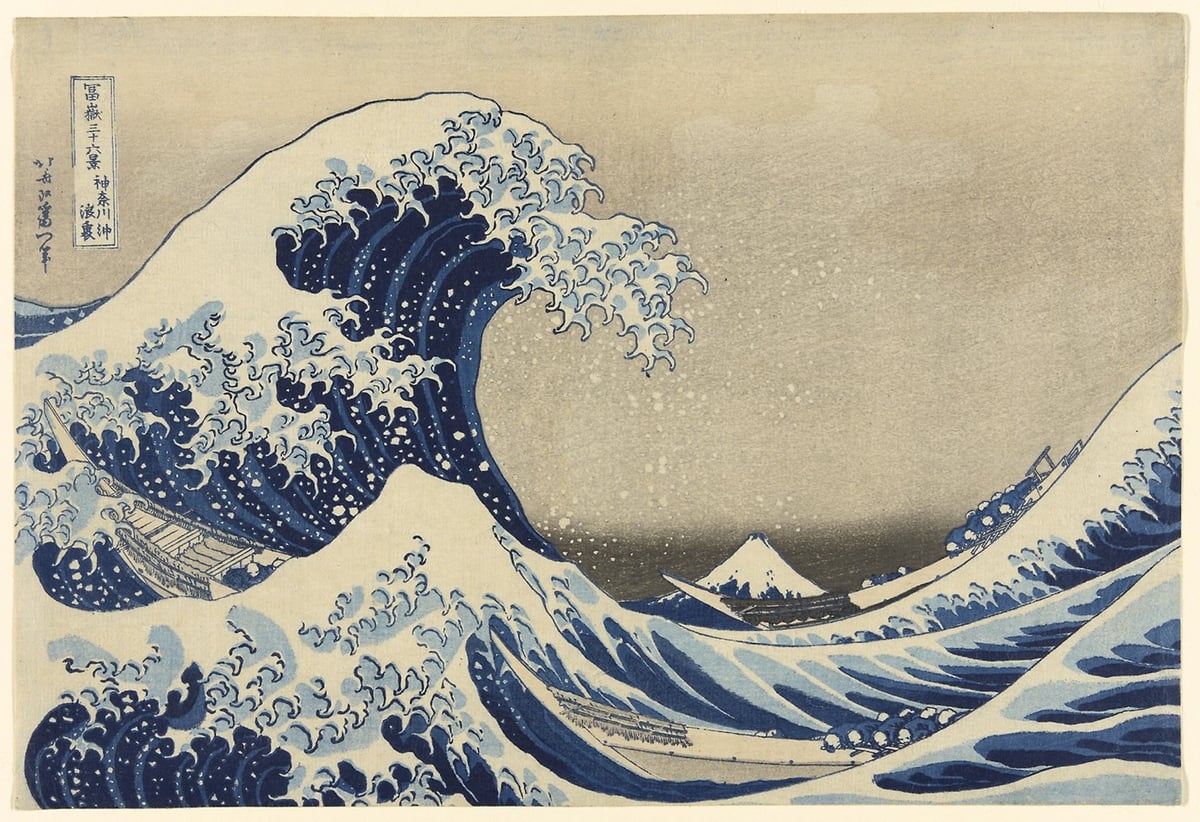


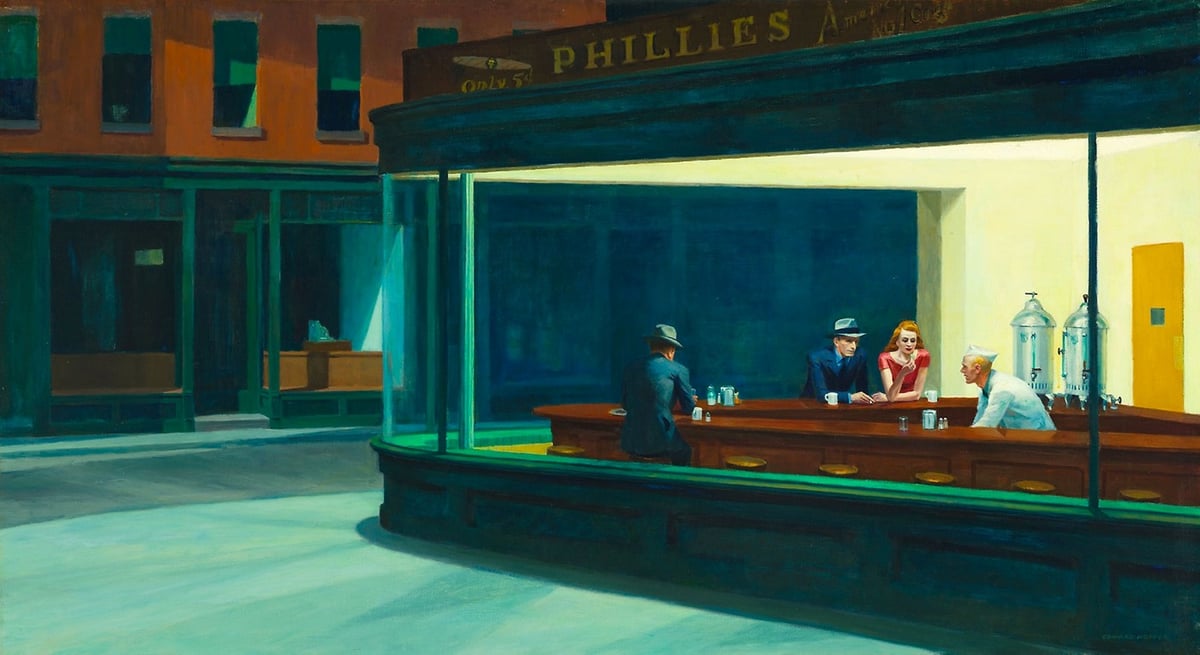


The Art Institute of Chicago recently unveiled a new website design. As part of their first design upgrade in 6 years, they have placed more than 52,000 high-resolution images from their collection online, available to all comers without restriction.
Students, educators, and just regular art lovers might be interested to learn that we’ve released thousands of images in the public domain on the new website in an open-access format (52,438 to be exact, and growing regularly). Made available under the Creative Commons Zero (CC0) license, these images can be downloaded for free on the artwork pages.
We’ve also enhanced the image viewing capabilities on object pages, which means that you can see much greater detail on objects than before. Check out the paint strokes in Van Gogh’s The Bedroom, the charcoal details on Charles White’s Harvest Talk, or the synaesthetic richness of Georgia O’Keeffe’s Blue and Green Music.
I’ve included a few notable works from their collection above: The Great Wave by Katsushika Hokusai, A Sunday on La Grande Jatte by Georges Seurat (which you can zoom and pretend you’re Cameron in Ferris Bueller’s Day Off), Self-Portrait by Vincent van Gogh, Nighthawks by Edward Hopper, Mao by Andy Warhol, and Two Sisters (On the Terrace) by Pierre-Auguste Renoir. The resolution on the images is high enough to check out the brushstrokes on the paintings. Here’s some detail on the van Gogh:

I love seeing more museums doing this.
America’s Last Chance at a Gospel Archive

This is a fascinating Longread from Oxford American, on Baylor University’s Robert Darden’s efforts to create a comprehensive archive (physical and digital) of American gospel music:
In 2001, when Darden set out to write the first comprehensive history of black gospel music, from its African origins into the twenty-first century, he came across citations to many fundamental songs—early recordings by the Staple Singers; “There Is Not a Friend Like Jesus” by the Roberta Martin Singers; “Peace in the Valley” by the Southern Sons— but found that the recordings were long gone, never to be heard again. So he sought what could be salvaged. In Chicago, he climbed to the top floor of a tenement building, where he listened in awe as a woman sang lines to old freedom songs. In Memphis, he swayed and clapped in the pews of Al Green’s church. But when he finished People Get Ready!: A New History of Black Gospel Music in 2004, having painstakingly laid out the history of the genre, he almost couldn’t bear that many of its core components were lost to us.
After Darden finished the book, he got in touch with some of his old contacts from Billboard, gospel scholars and collectors like Bob Marovich, Opal Nations, and Ray Funk. He wanted to determine how much of black gospel music from its golden age was lost or unavailable. They estimated seventy-five percent.
Ask them why, and the answer gets complicated. “Part of it is racism,” Darden says. “Part of it is economic.” Part of it has to do with the consolidation in the music industry (some record companies hold the copyrights to these songs, but, lacking financial incentive, don’t make them available in any form). And the last part, as he sees it, is the religious aspect of this music. Marovich put it to me this way: “When I was growing up, there was always, in our neighborhood, a couple of guys in white shirts and black ties that wanted to talk to you about Jesus. And you wanted to run the opposite direction from those guys… . Gospel is a little frightening to the unknowledgeable.”
In February of 2005, Darden wrote an op-ed in the New York Times lamenting the loss of these treasures from gospel’s golden age: “It would be more than a cultural disaster to forever lose this music,” he writes. “It would be a sin.” The apparent imbalance of that remark stuck with me. By any honest standard, we sin regularly. A cultural disaster seems like a much more grievous affair. But I also had the feeling that he was onto something—that the loss of this music was a moral failing born out of a history of oppression and neglect. He explained to me that when he wrote that, he had in mind Jim Wallis’s (at the time controversial) claim that racism was America’s original sin.
One of the songs referenced in the article as the archival project’s unofficial anthem is “Old Ship of Zion,” recorded by The Mighty Wonders. I found it on YouTube:
There’s a beauty to these recordings that belies their historical importance. John Lewis has said that “without music the civil rights movement would have been like a bird without wings.” Some antebellum spirituals are said to have held instructions for slaves to escape. You can also find the roots of almost every major American popular music in the various strands of gospel, from country to hip-hop. It would be very American to lose these strands, but it’s the better kind of American to bring our collective resources and technology to bear to save and recirculate these records for the public good.
‘No Way To Prevent This,’ Says Only Nation Where This Regularly Happens
For the past few years, whenever a mass shooting occurs in the US that gets wide press coverage, the satirical news site The Onion runs an article with this headline written by Jason Roeder: “‘No Way To Prevent This,’ Says Only Nation Where This Regularly Happens”. The reason they only do it when a shooting gets big coverage is that there have been 307 mass shootings so far this year and if they covered every one, about half of The Onion’s content would be this same article.
Each of these articles consists of an identical paragraph save for the dateline, the number of people killed by the shooter, the photo, and a couple of details from the shooting. From the piece on the Las Vegas shooting:
In the hours following a violent rampage in Las Vegas in which a lone attacker killed more than 50 individuals and seriously injured 400 others, citizens living in the only country where this kind of mass killing routinely occurs reportedly concluded Monday that there was no way to prevent the massacre from taking place. “This was a terrible tragedy, but sometimes these things just happen and there’s nothing anyone can do to stop them,” said Iowa resident Kyle Rimmels, echoing sentiments expressed by tens of millions of individuals who reside in a nation where over half of the world’s deadliest mass shootings have occurred in the past 50 years and whose citizens are 20 times more likely to die of gun violence than those of other developed nations. “It’s a shame, but what can we do? There really wasn’t anything that was going to keep these individuals from snapping and killing a lot of people if that’s what they really wanted.” At press time, residents of the only economically advanced nation in the world where roughly two mass shootings have occurred every month for the past eight years were referring to themselves and their situation as “helpless.”
From the headline on down, the piece is designed to skewer the tragic truth of contemporary America: we consider ourselves a civilized country but also accept without any real action that 10 or more people are going be executed in public every once in awhile while gathering to dance, to worship, to learn. Each successive posting of the article underscores that point with a clever cruelty: it happened here again and nowhere else.
In chronological order, here is every mass shooting article The Onion has posted, representing a total of 177 people killed.
‘No Way To Prevent This,’ Says Only Nation Where This Regularly Happens. 5/27/14. Isla Vista, CA. 6 people killed.
‘No Way To Prevent This,’ Says Only Nation Where This Regularly Happens. 6/17/15. Charleston, SC. 9 people killed.
‘No Way To Prevent This,’ Says Only Nation Where This Regularly Happens. 10/1/15. Roseburg, OR. 9 people killed.
‘No Way To Prevent This,’ Says Only Nation Where This Regularly Happens. 12/3/15. San Bernardino, CA. 14 people killed.
‘No Way To Prevent This,’ Says Only Nation Where This Regularly Happens. 10/2/17. Las Vegas, NV. 58 people killed (851 injured).
‘No Way To Prevent This,’ Says Only Nation Where This Regularly Happens. 11/5/17. Sutherland Springs, TX. 26 people killed.
‘No Way To Prevent This,’ Says Only Nation Where This Regularly Happens. 2/14/18. Parkland, FL. 17 people killed.
‘No Way To Prevent This,’ Says Only Nation Where This Regularly Happens. 5/18/18. Sante Fe, NM. 10 people killed.
‘No Way To Prevent This,’ Says Only Nation Where This Regularly Happens. 9/13/18. Bakersfield, CA. 5 people killed.
‘No Way To Prevent This,’ Says Only Nation Where This Regularly Happens. 10/28/18. Pittsburg, PA. 11 people killed.
‘No Way To Prevent This,’ Says Only Nation Where This Regularly Happens. 11/8/18. Thousand Oaks, CA. 12 people killed.
‘No Way To Prevent This,’ Says Only Nation Where This Regularly Happens. 6/1/2019. Virginia Beach, VA. 12 people killed.
In between the San Bernardino and Las Vegas shootings, they missed the shooting at the Pulse nightclub in Orlando, FL on 6/12/16 in which 49 people were killed as well as shootings in Dallas, TX, Lincoln County, MS, Plano, TX, and a second shooting in Orlando, FL in which 6 or more people were killed in each case.
I’ll keep this list updated, but I’m eagerly looking forward to a time when I never have to see a new version of this article ever again.
Fascism is Not an Idea to Be Debated, It’s a Set of Actions to Fight
Writing for Literary Hub, author Aleksandar Hemon writes about his friend Zoka — who he grew up with in Sarajevo before Hemon moved away and Zoka became a Serbian nationalist — in the context of the media trying to figure out if debating with racists & fascists is a good idea.
The public discussion prompted by the (dis)invitation [of Steve Bannon from the New Yorker Festival] confirmed to me that only those safe from fascism and its practices are likely to think that there might be a benefit in exchanging ideas with fascists. What for such a privileged group is a matter of a potentially productive difference in opinion is, for many of us, a matter of basic survival. The essential quality of fascism (and its attendant racism) is that it kills people and destroys their lives-and it does so because it openly aims so.
Witness Stephen Miller and Donald Trump’s “zero tolerance for illegal immigration” policy. Fascism’s central idea, appearing in a small repertoire of familiar guises, is that there are classes of human beings who deserve diminishment and destruction because they’re for some reason (genetic, cultural, whatever) inherently inferior to “us.” Every fucking fascist, Bannon included, strives to enact that idea, even if he (and it is usually a he-fascism is a masculine ideology, and therefore inherently misogynist) bittercoats it in a discourse of victimization and national self-defense. You know: they are contaminating our nation/race; they are destroying our culture; we must do something about them or perish. At the end of such an ideological trajectory is always genocide, as it was the case in Bosnia.
The effects and consequences of fascism, however, are not equally distributed along that trajectory. Its ideas are enacted first and foremost upon the bodies and lives of the people whose presence within “our” national domain is prohibitive. In Bannon/Trump’s case, that domain is nativist and white. Presently, their ideas are inflicted upon people of color and immigrants, who do not experience them as ideas but as violence. The practice of fascism supersedes its ideas, which is why people affected and diminished by it are not all that interested in a marketplace of ideas in which fascists have prime purchasing power.
Learning to Read in Your 30s Profoundly Transforms the Brain. “The learning process leads to a reorganization that extends to deep brain structures in the thalamus and the brainstem.”
The Stylish & Colorful Computing Machines of Yesteryear
Holy moly, these photographs of vintage computers & peripherals by “design and tech obsessive” James Ball are fantastic.
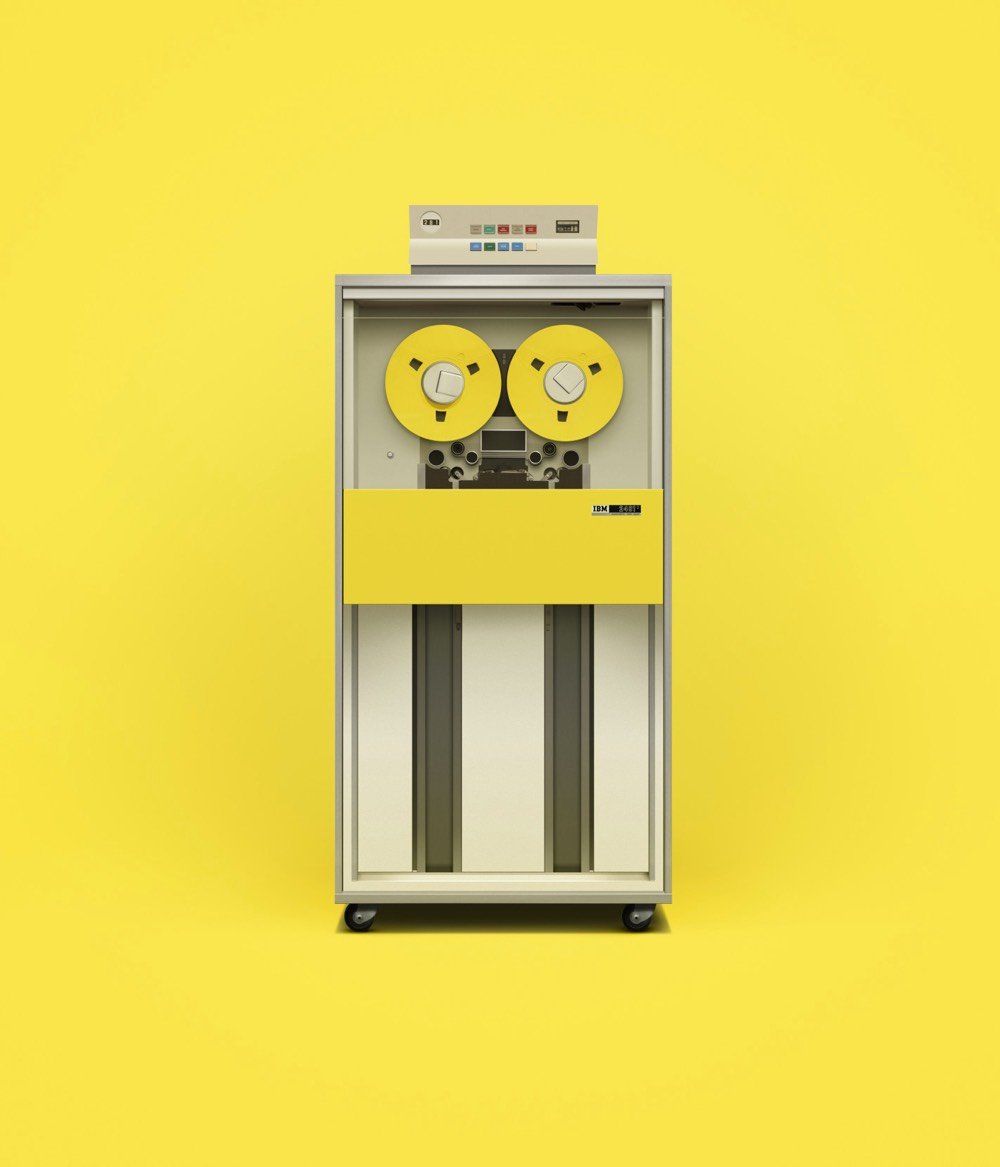


He did a similar series with early personal computers subtitled “Icons of Beige”.

(via @mwichary)
How VW Turned Beastie Boys-Inspired Theft of Car Parts into a Clever 80s Ad
In the music video for (You Gotta) Fight for Your Right (To Party!) and in promotional material surrounding the release of the band’s debut album Licensed to Ill, the Beastie Boys’ Mike D wore a chain with a VW emblem around his neck.
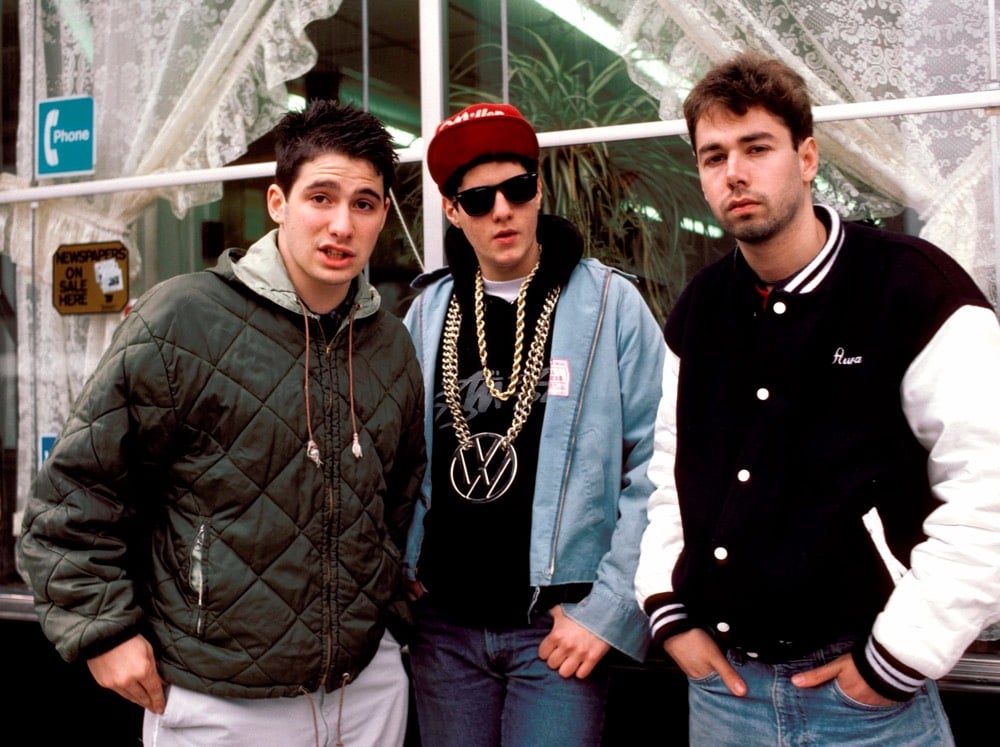
In the US and around the world, fans of the band started stealing VW emblems from the fronts of cars on the street and in dealer lots. In the UK, facing down some potential bad publicity, Volkswagen cleverly turned this into a marketing opportunity with this magazine ad:

Using the iconic layout of the groundbreaking “Think Small” and “Lemon” ads and calling their logo a “designer label”, VW offered fans of Beasties a free emblem just for writing into the company and requesting one. Brilliant ad. (via @imperica)
Why Are Humans Suddenly Getting Better at Tetris?
Tetris was invented in 1984 by Alexey Pajitnov. It was a hit from the start but became a sensation after it was bundled with Nintendo’s Game Boy. It’s perhaps the most popular video game of all time and was played casually (and not so casually) by hundreds of millions of people around the world. You’d think with all those people playing, the limits of the game were fully probed and the highest scores reached, right? Not quite…
As John Green explains in this video, a few people are actually getting much better at the NES version of Tetris than anyone was back in the 90s. One of the reasons for this is that a smaller dedicated group working together can be more effective than a massive group of people working alone on a problem. Today’s top players can not only compare scores (as people did in the pages of Nintendo Power), but they get together for competitions, share techniques, and post videos of their gameplay to Twitch and YouTube for others to mine for tricks.
The two approaches boil down to ants solving problems vs. deliberate practice. The hundreds of millions of players were able to map out seemingly all corners of the game, but only up to a point. It took a smaller group engaging in a collective deliberate practice to push beyond the mass effort.
Green’s discussion also reminded me of something Malcolm Gladwell said in his conversation with Tyler Cowen:
The most interesting thing happening, to me, in distance running right now is the rise of Japan as a distance-running power. And what’s interesting about Japan is that Japan does not have any one runner, particularly in marathons, does not have any one marathoner who is in the top 10 in the world, or even the top 20 in the world, but they have an enormous number of people who are in the top 100. So, your notion of whether Japan is a distance-running power depends on how you choose to define distance-running power.
We have one definition that we use, where we say we recognize a country as being very good at distance running if they have lots and lots of people in the top 10, but that strikes me as being incredibly arbitrary and it goes to my point about we’re not encouraging mediocrity. Why? All that says is… OK, Kenya’s got 9 of the top 10 of the fastest marathoners right now — why is that better than having 300 of the top 1,000? It’s purely arbitrary that we choose to define greatest as just the country that most densely occupies the 99th percentile. Why can’t we define it as the country that most densely occupies the 75th through 100th percentiles?
Tetris today is like Kenya in distance running…all the best-ever players are active right now. With Tetris in the 90s, you had a much broader group of people who were really good at the game but none of whom would crack the all-time top 20 (or perhaps even top 100).
Maybe you don’t give a flying flip about excellence in Tetris or distance running, but how about education? Should we direct the resources of our educational system to ensure that most people get a pretty good education or that fewer get an excellent education? Having a few super-educated people might result in more significant discoveries in science and achievements in literature or music (that everyone can then take advantage of) but having a broader base of educated citizens would result in better decisions being made in untold numbers of everyday situations. Which of those two situations is better? Which is more just? I’d suggest the answer maybe isn’t that obvious…
The United States of Guns
Like many of you, I read the news of a single person killing at least 12 people in Thousand Oaks, California last night. While this is an outrageous and horrifying event, it isn’t surprising or shocking in any way in a country where more than 33,000 people die from gun violence each year.
America is a stuck in a Groundhog Day loop of gun violence. We’ll keep waking up, stuck in the same reality of oppression, carnage, and ruined lives until we can figure out how to effect meaningful change. I’ve collected some articles here about America’s dysfunctional relationship with guns, most of which I’ve shared before. Change is possible — there are good reasons to control the ownership of guns and control has a high likelihood of success — but how will our country find the political will to make it happen?
An armed society is not a free society:
Arendt offers two points that are salient to our thinking about guns: for one, they insert a hierarchy of some kind, but fundamental nonetheless, and thereby undermine equality. But furthermore, guns pose a monumental challenge to freedom, and particular, the liberty that is the hallmark of any democracy worthy of the name — that is, freedom of speech. Guns do communicate, after all, but in a way that is contrary to free speech aspirations: for, guns chasten speech.
This becomes clear if only you pry a little more deeply into the N.R.A.’s logic behind an armed society. An armed society is polite, by their thinking, precisely because guns would compel everyone to tamp down eccentric behavior, and refrain from actions that might seem threatening. The suggestion is that guns liberally interspersed throughout society would cause us all to walk gingerly — not make any sudden, unexpected moves — and watch what we say, how we act, whom we might offend.
We’re sacrificing America’s children to “our great god Gun”:
Read again those lines, with recent images seared into our brains — “besmeared with blood” and “parents’ tears.” They give the real meaning of what happened at Sandy Hook Elementary School Friday morning. That horror cannot be blamed just on one unhinged person. It was the sacrifice we as a culture made, and continually make, to our demonic god. We guarantee that crazed man after crazed man will have a flood of killing power readily supplied him. We have to make that offering, out of devotion to our Moloch, our god. The gun is our Moloch. We sacrifice children to him daily — sometimes, as at Sandy Hook, by directly throwing them into the fire-hose of bullets from our protected private killing machines, sometimes by blighting our children’s lives by the death of a parent, a schoolmate, a teacher, a protector. Sometimes this is done by mass killings (eight this year), sometimes by private offerings to the god (thousands this year).
The gun is not a mere tool, a bit of technology, a political issue, a point of debate. It is an object of reverence. Devotion to it precludes interruption with the sacrifices it entails. Like most gods, it does what it will, and cannot be questioned. Its acolytes think it is capable only of good things. It guarantees life and safety and freedom. It even guarantees law. Law grows from it. Then how can law question it?
Roger Ebert on the media’s coverage of mass shootings:
Let me tell you a story. The day after Columbine, I was interviewed for the Tom Brokaw news program. The reporter had been assigned a theory and was seeking sound bites to support it. “Wouldn’t you say,” she asked, “that killings like this are influenced by violent movies?” No, I said, I wouldn’t say that. “But what about ‘Basketball Diaries’?” she asked. “Doesn’t that have a scene of a boy walking into a school with a machine gun?” The obscure 1995 Leonardo Di Caprio movie did indeed have a brief fantasy scene of that nature, I said, but the movie failed at the box office (it grossed only $2.5 million), and it’s unlikely the Columbine killers saw it.
The reporter looked disappointed, so I offered her my theory. “Events like this,” I said, “if they are influenced by anything, are influenced by news programs like your own. When an unbalanced kid walks into a school and starts shooting, it becomes a major media event. Cable news drops ordinary programming and goes around the clock with it. The story is assigned a logo and a theme song; these two kids were packaged as the Trench Coat Mafia. The message is clear to other disturbed kids around the country: If I shoot up my school, I can be famous. The TV will talk about nothing else but me. Experts will try to figure out what I was thinking. The kids and teachers at school will see they shouldn’t have messed with me. I’ll go out in a blaze of glory.”
In short, I said, events like Columbine are influenced far less by violent movies than by CNN, the NBC Nightly News and all the other news media, who glorify the killers in the guise of “explaining” them. I commended the policy at the Sun-Times, where our editor said the paper would no longer feature school killings on Page 1. The reporter thanked me and turned off the camera. Of course the interview was never used. They found plenty of talking heads to condemn violent movies, and everybody was happy.
Jill Lepore on the United States of Guns:
There are nearly three hundred million privately owned firearms in the United States: a hundred and six million handguns, a hundred and five million rifles, and eighty-three million shotguns. That works out to about one gun for every American. The gun that T. J. Lane brought to Chardon High School belonged to his uncle, who had bought it in 2010, at a gun shop. Both of Lane’s parents had been arrested on charges of domestic violence over the years. Lane found the gun in his grandfather’s barn.
The United States is the country with the highest rate of civilian gun ownership in the world. (The second highest is Yemen, where the rate is nevertheless only half that of the U.S.) No civilian population is more powerfully armed. Most Americans do not, however, own guns, because three-quarters of people with guns own two or more. According to the General Social Survey, conducted by the National Policy Opinion Center at the University of Chicago, the prevalence of gun ownership has declined steadily in the past few decades. In 1973, there were guns in roughly one in two households in the United States; in 2010, one in three. In 1980, nearly one in three Americans owned a gun; in 2010, that figure had dropped to one in five.
A Land Without Guns: How Japan Has Virtually Eliminated Shooting Deaths:
The only guns that Japanese citizens can legally buy and use are shotguns and air rifles, and it’s not easy to do. The process is detailed in David Kopel’s landmark study on Japanese gun control, published in the 1993 Asia Pacific Law Review, still cited as current. (Kopel, no left-wing loony, is a member of the National Rifle Association and once wrote in National Review that looser gun control laws could have stopped Adolf Hitler.)
To get a gun in Japan, first, you have to attend an all-day class and pass a written test, which are held only once per month. You also must take and pass a shooting range class. Then, head over to a hospital for a mental test and drug test (Japan is unusual in that potential gun owners must affirmatively prove their mental fitness), which you’ll file with the police. Finally, pass a rigorous background check for any criminal record or association with criminal or extremist groups, and you will be the proud new owner of your shotgun or air rifle. Just don’t forget to provide police with documentation on the specific location of the gun in your home, as well as the ammo, both of which must be locked and stored separately. And remember to have the police inspect the gun once per year and to re-take the class and exam every three years.
Australia’s gun laws stopped mass shootings and reduced homicides, study finds:
From 1979 to 1996, the average annual rate of total non-firearm suicide and homicide deaths was rising at 2.1% per year. Since then, the average annual rate of total non-firearm suicide and homicide deaths has been declining by 1.4%, with the researchers concluding there was no evidence of murderers moving to other methods, and that the same was true for suicide.
The average decline in total firearm deaths accelerated significantly, from a 3% decline annually before the reforms to a 5% decline afterwards, the study found.
In the 18 years to 1996, Australia experienced 13 fatal mass shootings in which 104 victims were killed and at least another 52 were wounded. There have been no fatal mass shootings since that time, with the study defining a mass shooting as having at least five victims.
From The Onion, ‘No Way To Prevent This,’ Says Only Nation Where This Regularly Happens:
At press time, residents of the only economically advanced nation in the world where roughly two mass shootings have occurred every month for the past eight years were referring to themselves and their situation as “helpless.”
But America is not Australia or Japan. Dan Hodges said on Twitter a few years ago:
In retrospect Sandy Hook marked the end of the US gun control debate. Once America decided killing children was bearable, it was over.
This can’t be the last word on guns in America. We have to do better than this for our children and everyone else whose lives are torn apart by guns. But right now, we are failing them miserably, and Hodges’ words ring with the awful truth that all those lives and our diminished freedom & equality are somehow worth it to the United States as a society.
The Former Chief of Disguise of the CIA Explains How Spies Use Disguises
In this video, Jonna Mendez, the former Chief of Disguise of the CIA, explains how disgu — Wait, wait, wait…Chief of Disguise!! That is an actual job title!?! WHAT! Ok, back to the post… — explains how disguises are used in the CIA.
With women, you have a broader range of what you can do. You also have one extra step: you can turn a woman into a man. I would mention that it’s almost impossible to turn a man into a woman. What we do is always additive — we can make you taller, we can make you heavier, we can make you older — we can’t go the other direction. You want to be the person that gets on the elevator and then gets off and nobody even remembers that you were really there. That is a design goal at the disguise labs at CIA.
Interesting throughout. As a fan of the disguises on The Americans and as someone who got to wear some bitchin’ makeup for a short extra appearance on Halt and Catch Fire, I really enjoyed this video, but now I’m wondering what my “dead giveaway” mannerisms are. Friends, any thoughts?
Some Reflections from My Short Trip to Istanbul

At the end of October, I spent barely 48 hours in Istanbul — too quick, but I saw a lot of stuff in a short time. When planning this trip, I had a lot of different thoughts about places I could go — the American Southwest, Barcelona, London, Edinburgh, Seattle/Portland, Miami — but the thing that really sold me was a relatively cheap plane ticket that would take me to both Berlin and Istanbul. A two-fer? Sign me up. I’d been to Berlin before, but I was a bit nervous about Istanbul because it seemed so culturally different than other places I’d been. I needn’t have worried.
Just after I had checked into my hotel room, I heard a chanting voice over a loudspeaker coming from outside. I opened my window for a better listen — it was the adhan (the Muslim call to prayer) for the sunset prayer (probably from the Hagia Sophia, which was quite close). As I walked around the city for the next day and a half, I heard the adhan several more times. Watching the sunset in Kadikoy, you could hear the call ringing out from several mosques across the city, nearly in unison. I’m not Muslim or even remotely religious, so I was surprised at how much I liked hearing it. As with tolling European church bells, the calls to prayer knits cities together in an auditory way that secularism has yet to manage.
The nightstand in my hotel room had a sticker on it pointing the direction to Mecca. (There are apps to help with this as well.)
There are cats all over the place in Istanbul — I must have seen a dozen inside Hagia Sophia alone. My friend Jodi investigated why there are so many cats in the city.
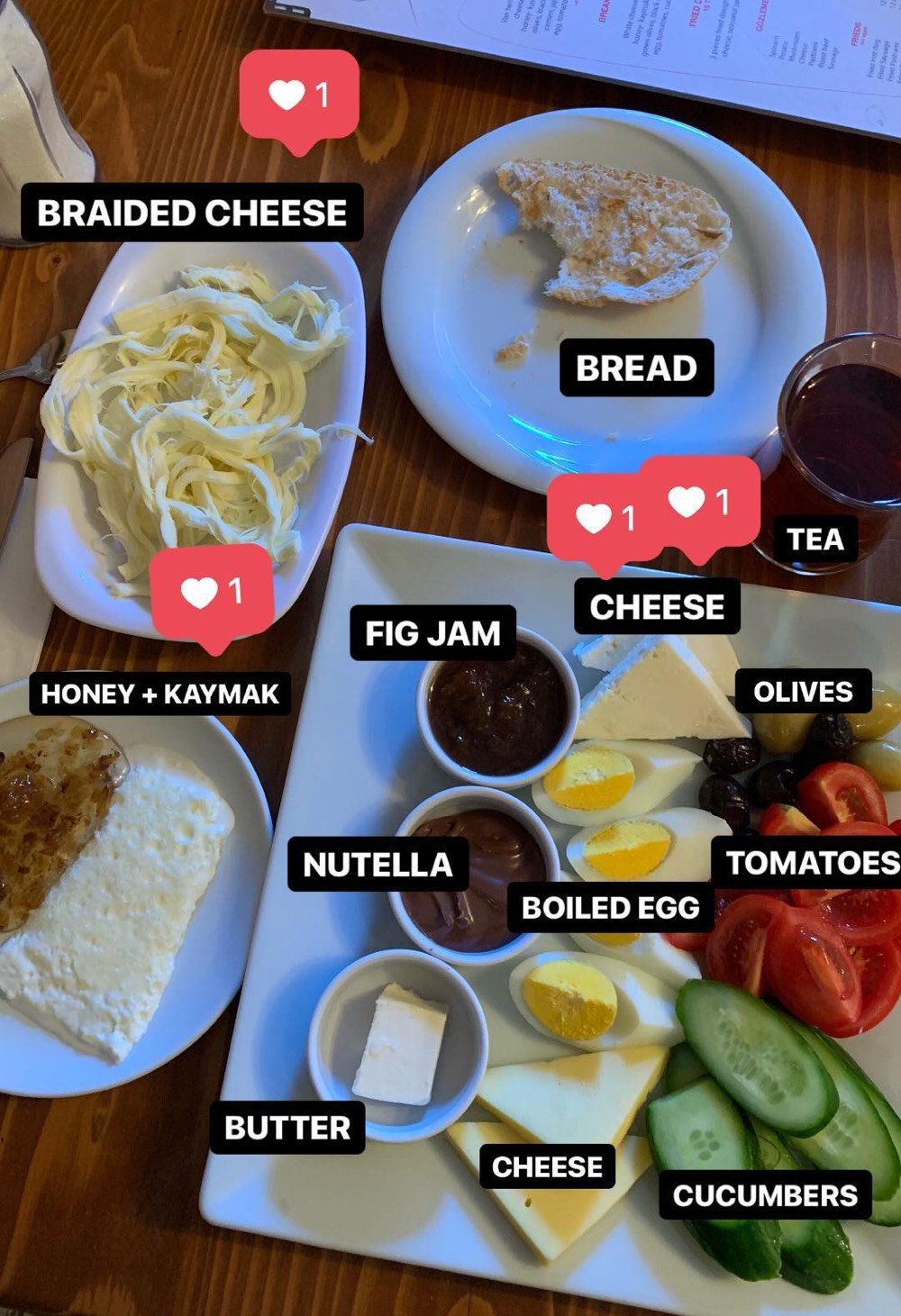
My first morning in Istanbul, I headed to Van Kahvalti Evi for breakfast on the strong recommendation of a reader. What greeted me was an amazing breakfast, the best I have had in quite some time (annotated above). As I was dining solo, I wasn’t able to get full breakfast (it was for 2+ people only), but I did pretty well. My favorites were the braided cheese, kaymak & honey, and the saltiest fresh cheese. The couple sitting next to me ordered the full breakfast and the waiter’s tray was like a magical clown car…he just kept putting little plates of delicious cheeses and pastes and fruits onto the table until it was completely covered. The freshness of everything was underscored by that morning’s food delivery coming in through the front door and streaming past me, a seemingly endless procession of fresh fruit, vegetables, and such. Highly recommended.
Everything I read about Istanbul taxis basically said to avoid them at all costs because they try to rip you off (and I’m not a huge fan of taxis on a good day), so that’s what I did. Upon landing, I bought an Istanbulkart to use the metro & ferries the whole time I was there. Getting from the airport to my hotel was pretty easy on the metro (thanks Citymapper), didn’t take too much longer than a taxi would have, and cost a lot less. Tip: machines are cash only, so you’d better have some Turkish lira on hand before exiting the airport.
Istanbul is not a bicycle city, at least not in the areas I visited. I saw maybe three people on bikes the entire time I was there? For starters, the city streets in the oldest parts of town are so small there’s nowhere to even put bike lanes. And then there are the hills, which made walking challenging at times, never mind biking. Even where there are dedicated lanes, they can be overwhelmed by pedestrians. In a park in Kadikoy, the balık ekmek (fish sandwich) vendors set up their carts right in the bike lane.
Although the interior was being renovated when I visited, Hagia Sophia was staggeringly impressive. Originally built in just under six years by Emperor Justinian, ruler of the Byzantine Empire (aka what was left of the Holy Roman Empire after the fall of Rome in the 5th century), it was completed in 537 as the world’s largest building and largest cathedral, retaining the latter title for almost 1000 years. Justinian wanted Hagia Sophia to be the biggest church in the world, partially for the glory of God and partially to best his peers. At the building’s dedication, he was recorded as saying, “My Lord, thank you for giving me chance to create such a worshipping place” followed by “Solomon, I have outdone you.” in reference to Solomon’s temple in Jerusalem. IN YOUR FACE SOLOMON!
Hagia Sophia was Byzantine until 1204, Roman Catholic for more than 50 years, and Greek Orthodox for about 200 years after that. In 1453, Mehmed the Conqueror of the Ottoman Empire — wait for it… — conquered Constantinople and turned Hagia Sophia into a mosque. It became a museum in 1935. Walking around inside it, you can see and feel all of this history, layered all around you. The marble floors are worn down from centuries of devoted foot traffic. The wear pattern is uneven due to differing hardnesses of the rocks in the marble, giving the floor a marvelous wavy quality. The Christian aspects of the church were covered or destroyed when the church was converted to a mosque, but now they peek through here and there again. A remarkable experience of time travel through cultures, mirroring Istanbul’s own long and varied history as a crossroads between East and West.
I pretty much had the They Might Be Giants cover of Istanbul (Not Constantinople) on repeat in my head the entire time I was in town.

Along with many of its tourists, the overwhelming majority of Turkey’s population is Muslim, so it wasn’t surprising to see women with headwear like hijabs and niqabs all over in Istanbul. I have lots of thoughts about this religious and cultural practice, but mostly it made me think about how the dress of women in the US and other western countries is also restricted by our culture in many ways.
As I had less than 48 hours to spend in Istanbul, I mainly stayed in the central part of the city where most of the tourists were. Walking around was unpleasant at times because it seems like almost everyone is trying to sell you something. In the busiest areas near the top attractions and restaurants, someone tried to sell me a tour, a rug, a meal, or some sweets about every 30 seconds. It was oppressive. I mentioned this to a friend of mine and she said, “Now you know how women feel all the time walking around pretty much everywhere.”
The constant selling also put my guard up far more than it normally is (which is admittedly pretty high). In Taksim Square, a guy asked me for a light and we struck up a conversation. Super friendly guy, said his name was Ahmed, hailed from Qatar, in town for the day on his way to London, was a computer programmer, wasn’t particularly religious, liked travlling alone because his girlfriend (a lawyer) worked and talked too much. He was pleased to find me because this meant us two solo travellers could hang out for the evening. He’d asked at his hotel where to go and was heading towards this place with whiskey and belly dancing. Now, this is the point in the story where I’m supposed to head off into the evening with Ahmed and have an adventure. But because of the constant barrage of selling (plus I was sick and tired and wasn’t drinking), I mostly felt like I was being scammed and that “Ahmed” was actually pals with the guy who owned this belly dancing establishment and was tasked with suckering tourists like me into the place to spend money. Was he just a friendly guy or just another salesman? I still don’t really know, but I bid Ahmed a firm goodbye and still have not crossed “see belly dancing in Istanbul with a stranger” off of my bucket list.
But the next day, I finally succumbed to the relentless pressure. As I was contemplating joining the longish line at the Basilica Cistern, I made the mistake of looking contemplative, as if I were perhaps confused. A man came up to me, asked me if I spoke English, and then said I should come back later when the line is shorter. “Don’t worry,” he said, “I’m not trying to sell you a tour. I’m just on my way back to work from lunch.” Thus disarmed, we started chatting. His name was Musa and he had a business just up the street…perhaps he could give me his card and I could come for a visit tomorrow? Maybe, I said, wanting to be polite. We chatted some more, about other things. I agreed to go with him to get his business card; he still had not mentioned what business he was in…something to do with art, he said.
When we got to his place, it was a rug store. Musa’s friendly onboarding process had worked to get me into the store, penetrating my defenses by using my midwestern politeness against me. We sat down on a nice sofa and Musa served me apple tea; it materialized seemingly out of nowhere, part of a practiced routine. We chatted for about 5 or 10 minutes, sometimes about rugs and sometimes about other things. He told me about watching a TV program that featured this strange street food from NYC: hot dogs. At this point, I was feeling totally suckered, helpless under the thrall of this master salesman. But then I had another thought: this guy is not actually in control of this situation because I’m never in a million years buying a rug from him. Emboldened by my newfound power in our relationship, I thanked Musa politely for the tea, accepted his card, and left to join the line at the cistern.

For dinner on my last night, I sat down at an outdoor table at Meşhur Filibe Köftecisi, figuring that one of the few restaurants where no one was trying to get me to look at a menu was actually a good place to find delicious food. It’s a tiny place on a small street with several other restaurants filled with what looked like locals, another good sign. I asked for a menu but the owner shrugged me off with a friendly gruffness. “We have köfte,” he told me. “Meatballs. Someone like you orders nine. Nine meatballs. Salad to begin. What’s not to like?” I gave him a thumbs up and he yelled something to the chef, an older man who I never saw without a cigarette and had probably made about 10 million köfte over the course of his life.
While I waited for my food, I noticed an order of köfte going out of the kitchen…to a diner at the restaurant across the street. When he was finished, the staff at that place bussed the dishes back across the way. Meanwhile, my meal arrived and the köfte were flavorful and tender and juicy, exactly what I wanted…no wonder the place across the street had outsourced their meatballs to this place. I’d noticed the owner, the waiter, and the cook drinking tea, so after I finished, I asked if I could get a tea. The owner nodded and started yelling to a guy at the tea place two doors down. A few minutes later, a man bearing a tray with four glasses of tea arrived, dropping one at my table and the other three for the staff. Just then, a server from the place across the street came over to break a 100 lira bill. Me being a big nerd, this all reminds me of Unix and the internet, all of these small pieces loosely joined together to create a well-functioning and joyous experience. There’s only one thing on the menu at Meşhur Filibe Köftecisi, but you can get anything else within yelling distance. I declined dessert…who knows where that would have come from.
I also visited the Basilica Cistern (impressive ancient infrastructure), The Blue Mosque (under construction and so underwhelming), Topkapi Palace (underwhelming, but I was pretty museumed out by this point so perhaps an unfair assessment), Taksim Square (very crowded on a Friday night), and walked the length of Istiklal Avenue (very commercial in a Western sort of way).
Getting to my departure flight from Ataturk Airport was the tightest security I have ever gone through. To even enter the airport, you go through a metal detector. Then in the line to check into the flight, my passport was checked by three different people before my boarding pass was issued. Passport & boarding pass were checked again to get into the security line and then went through security, where most people’s bags got searched (but not mine). At the gate, my boarding pass was checked by at least six different people, who each put a different mark or stamp or signature on it, and then my carry-on luggage was searched (mandatory search…everyone got this treatment). Only then were we allowed on the plane. (Upon arrival in Boston, after waiting in a massive line, the border control officer barely glanced at my passport before waving me through.)

I only posted a couple of Istanbul photos on Instagram but posted a bunch of Instagram Stories (collected here). And big thanks to everyone who offered advice on where to go and what to eat. I really enjoyed Istanbul and hope to make it back someday.
Watching a Teen Music Star Grow Up
Vanity Fair interviewed singer/songwriter Billie Eilish last October just as her career was taking off. A year later, they repeated the interview with her, now 16 years old, using the same questions to see what had changed — 2017: 257K followers on Insta, playing to crowds of 500 people. 2018: 6.3 million Insta followers, crowds of 40,000+. The result is really affecting, particularly on questions like “Do you feel pressure?” where the difference in answers is greatest.
Eilish’s situation is extreme, but some version of this is playing out with all of America’s youth right now, dealing with how to be in the world when interacting with thousands or even hundreds of thousands or millions of other people, far beyond Dunbar’s number, is increasingly commonplace. Now if you’ll excuse me, I have something in my eye and who’s playing that Cat’s in the Cradle song anyway?!
Phew: Flickr Commons will remain available. Flickr Commons is still one of the very best things on the web.
An Incredible Video of What It’s Like to Orbit the Earth for 90 Minutes
This is easily the most awe-inspiring and jaw-dropping thing I’ve seen in months. In its low Earth orbit ~250 miles above our planet, the International Space Station takes about 90 minutes to complete one orbit of the Earth. Fewer than 600 people have ever orbited our planet, but with this realtime video by Seán Doran, you can experience what it looks like from the vantage point of the IIS for the full 90 minutes.
The video is in 4K so find the largest monitor/TV you can, turn up the sound, watch for awhile (even if it’s only for a few minutes), and see if you don’t experience a little bit of the Overview Effect, what NASA astronaut Kathryn Sullivan described as a life-altering experience:
I first saw the earth — the whole earth — from the shuttle Challenger in 1984. The view takes your breath away and fills you with childlike wonder. An incredibly beautiful tapestry of blue and white, tan, black and green seems to glide beneath you at an elegant, stately pace. But you’re actually going so fast that the entire map of the world spins before your eyes with each 90-minute orbit. After just one or two laps, you feel, maybe for the first time, like a citizen of a planet.
We could use more global citizenry these days.
Exit Polls: How Voting Blocs Have Shifted From the 80s to Now. Interesting charts.
Long-Delayed Documentary About Aretha Franklin Finally Set for Release
In January 1972, the Southern California Community Choir, a group of Atlantic Records musicians, and Aretha Franklin gathered at the New Temple Missionary Baptist Church in Los Angeles to record music for a live album. That album, Amazing Grace, went on to be Franklin’s best selling album and is still the top-selling gospel album of all time.
Director Sydney Pollack, who would later win a Best Director Oscar for Out of Africa, filmed the two-day recording for a documentary but wound up not being able to complete the film because the picture and sound couldn’t be synced — they hadn’t used a clapperboard before takes. So the footage, which includes the Rolling Stones’ Mick Jagger and Charlie Watts jamming out in the back of the church, was shelved. Before he died in 2008, Pollack entrusted the footage to Alan Elliott, who was able to sync the sound and make a 87-minute film out of it.
The film was going to be released a few times over the past decade, but Franklin successfully sued to keep it from the public, saying that her likeness was being used without her permission Even though she professed to liking the film, Franklin was strident about her finances. After Franklin’s death, Elliott screened it for her family and they approved its release. According to Variety, the film will screen at the DOC NYC film festival on November 12th and then later in NYC and LA to qualify for the Oscars.
The trailer for the film is embedded above. Elliott seems to have snuck it online without anyone noticing — as of now, it’s got fewer than 800 views on YouTube.
How Sevilla Became a Bicycle City in Just 18 Months
In just a few years, Sevilla, Spain went from almost no bike paths and low ridership to robust network of bike paths and many people using them. To do it, the ruling party used the positive results of a public poll to move quickly, annexing 5000 parking spots and spending a relatively meager €32 million to build 80+ kilometers of bike paths in just 18 months.
The year after the basic network opened, Calvo said, it seemed like every family in the city had suddenly bought one another bicycles for Christmas.
“Everyone was talking about the success of the bike lanes at that point,” he said. “The sports shops, they ran out of bikes. They needed to get bikes from Barcelona, from Madrid, and over from France.”
Once that happened, it became clear that the huge bike network investment had been a fiscal bargain.
“The whole network is €32 million,” he says. That’s how many kilometers of highway - maybe five or six? It’s not expensive infrastructure. … We have a metro line that the cost was €800 million. It serves 44,000 trips every day. With bikes, we’re serving 70,000 trips every day.”
What the Hell Happened to Darius Miles?
Darius Miles was drafted 3rd overall by the LA Clippers in the 2000 NBA Draft. After 8 seasons, a major injury, and $62 million, Miles was out of the league and bankrupt. In this entertaining and affecting article for The Players’ Tribune, Miles explains how he got to the NBA and what went wrong.
It’s crazy to think about, but six years after we were at the peak with the Young Clippers, I was basically out of the league. I was 27 years old, and I had doctors telling me that my knee was too messed up to play basketball ever again.
My whole life, I used basketball as an escape. When you grow up how I grew up, I think you’re probably bound to have some kind of PTSD. I ain’t a doctor, but when you grow up running from gunshots all the time, I think there’s something inside you that never leaves. I used to feel this pressure on me — I’m talking like a physical pressure, you know? But I used to be able to go out onto a basketball court and just unleash it. You could let it all out. You could dunk the shit outta that motherfucker in front of 100 people or 20,000 people and feel good for a minute.
Basketball got taken away from me at 27, and I was lost. I was just kind of going through the motions. Then a couple years later, my momma got taken away from me, and I pretty much went insane.
Miles’ friend and former teammate Quentin Richardson edited the piece and wrote one of his own for the Tribune as well.
Winners of the 2018 Wildlife Photographer of the Year Awards
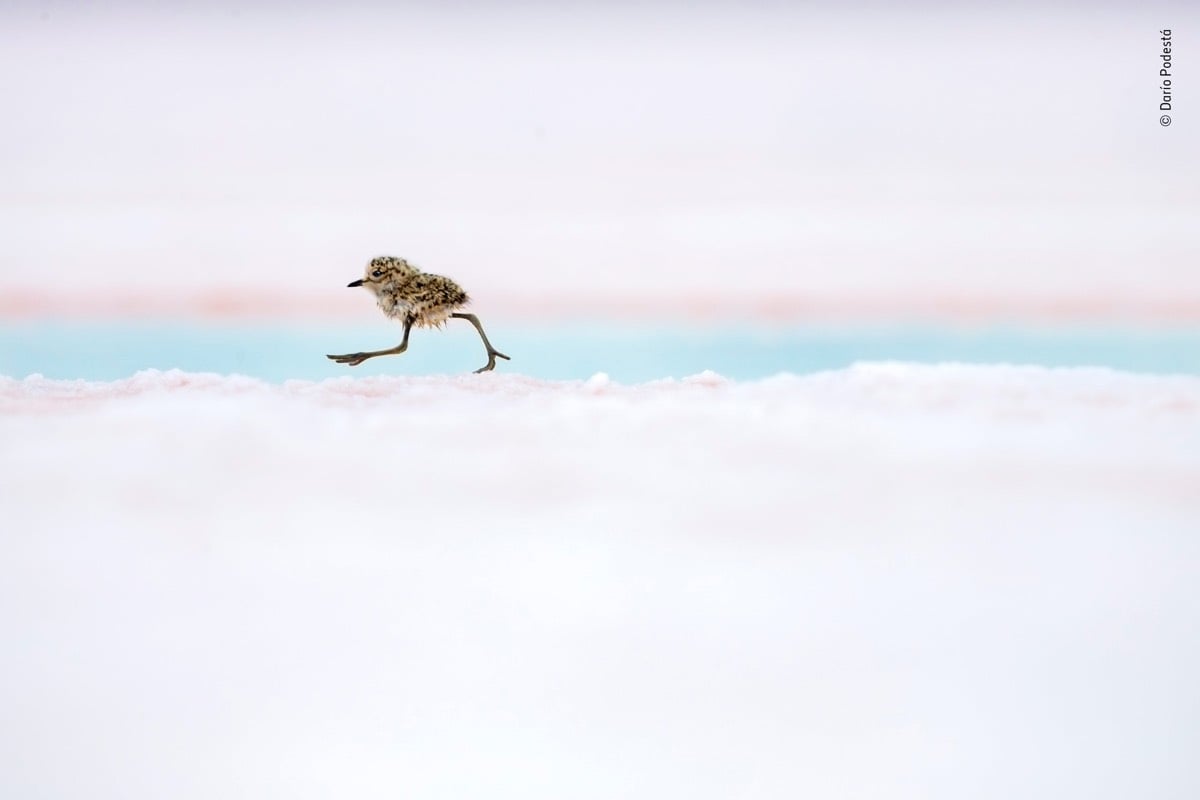

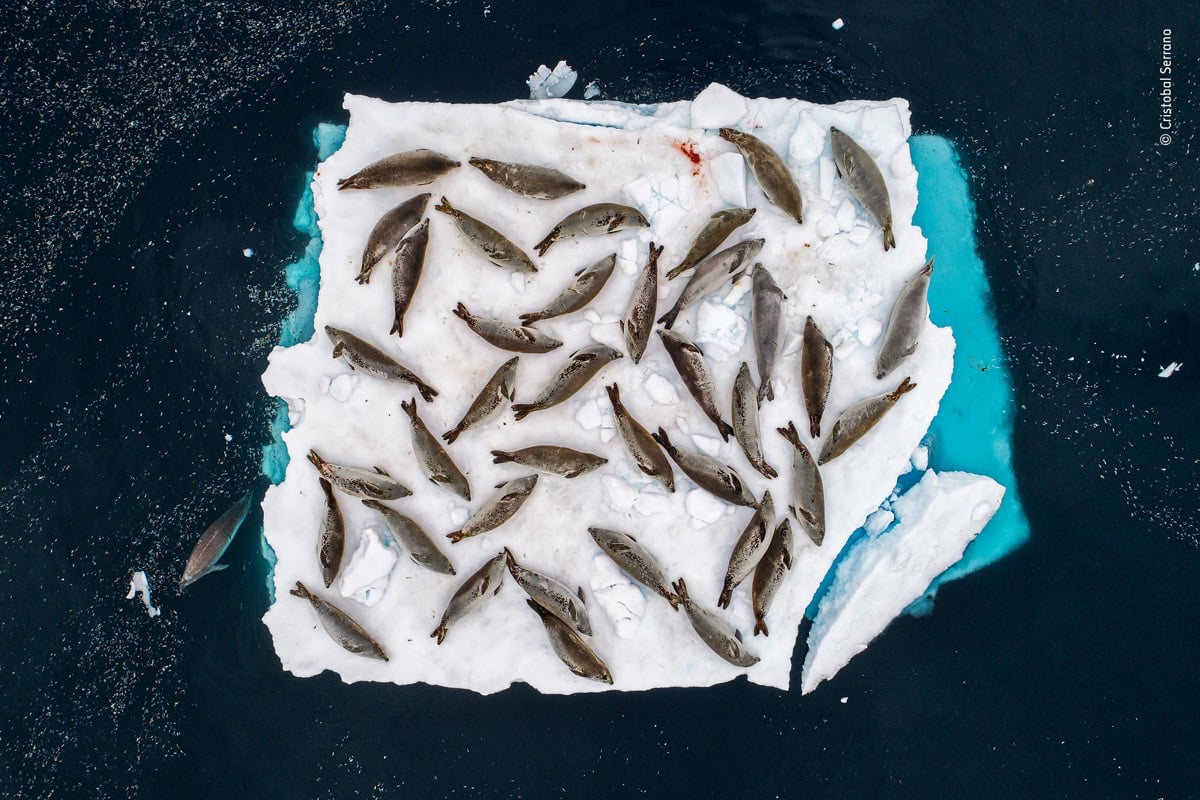

London’s Natural History Museum has announced the winners of the 2018 Wildlife Photographer of the Year contest.
I included some of my favorites above. From top to bottom, Darío Podestá,
Marsel van Oosten, Cristobal Serrano, and Carlos Perez Naval (who competed in the 11-14 year-old category).
Hours and Hours of Relaxing & Meditative Videos
Today is Election Day in the US and even President Obama is saying these elections “might be the most important of our lifetimes”. Everyone is a liiiittle on edge. Instead of exhorting you to go vote, I dug through the kottke.org archives for some videos to watch if you need a calm moment or hour or entire afternoon and deep into the evening’s election returns.
From the BBC Earth team, long videos of relaxing sounds and scenes from their groundbreaking documentaries like Planet Earth II and Blue Planet II (more here):
A 10-hour version of the world’s most relaxing song:
This is one of my personal favorites, a Norwegian icebreaker idling in the frozen Arctic — “natural white noise sounds generated by the wind and snow falling, combined with deep low frequencies with delta waves from the powerful icebreaker idling engines”:
A 30-day time lapse of a container ship traveling from the Red Sea to Hong Kong:
Claude Debussy’s Clair de Lune is always relaxing and is the perfect accompaniment to snow surfing, an acrobatic art performance, and a tour of the Moon:
A realtime orbit of the Earth in 92 minutes, as seen from the International Space Station:
Somehow, watching someone unslice a tomato is super relaxing:
Recording of a live view of a Norwegian train making its way through the wintery countryside:
Julian Baumgartner restoring a damaged painting:
90-minute video of the sea filmed from the bow of a container ship (no sound but you could combine w/ the most relaxing song):
An 18-minute tour of the International Space Station:
One of Michael Shainblum’s many nature time lapse videos:
A 24-hour generative soundtrack to a trip around Iceland by Sigur Rós (thx, lisa):
This isn’t relaxing but it is funny — a meditation guided by a Dalek:
That’s all I’ve got. Do you have any particular favorites I haven’t posted? Let me know!
New Yorker writer & national treasure Roger Angell is 98 years old, first voted in 1944 for FDR (!), and has a message for us all: go vote.
My Recent Media Diet for Fall 2018
I’ve been keeping track of every media thing I “consume”, so here are quick reviews of some things I’ve read, seen, heard, and experienced in the last month or so. Ok, two months in this case…it’s been awhile. There are a lot of movies on this installment of the list, but I’ve actually gotten some reading done as well. I’m still making my way through Making a Murderer’s second season, just started Small Fry, and am looking forward to seeing the Fantastic Beasts sequel with my kids in a couple of weeks. I’m trying to convince them to dress up when we go to the theater but no dice so far.
Origin Story by David Christian. This is a book based on Christian’s Big History concept, a story that weaves everything from quarks to water to dinosaurs to humans fighting entropy through greater energy & resource usage into one long history of the universe. (B+)
Slow Burn Season 2. Leon Neyfakh and his team are operating at a high level…this is one of the best podcasts out there. I had two major and conflicting thoughts while listening to this season: 1. Bill Clinton is not a good human being, should not have been President, and should not be embraced by contemporary progressives, and 2. The investigation of Clinton by the “independent” counsel was motivated entirely by partisan politics, was mostly bullshit, and shouldn’t have led to anything close to Clinton’s impeachment. (A+)
Three Identical Strangers. Fascinating entry in the nature vs nurture debate. This movie had at least two more gears than I expected. (A-)
Prohibition. Really interesting three-part documentary from Ken Burns & Lynn Novick about Prohibition in America. For instance, I didn’t know that the early temperance movement was led by women who were basically fed up with their husbands coming home and beating & raping them. Between this and some other stuff I’ve been thinking about, I’m convinced that while prohibition isn’t the answer, the US would be a better place to live if alcohol consumption were much lower. (A-)
Seeing White. What even to say about this? Fantastic and fascinating podcast series about the notion of “whiteness”, where racism comes from, and a lot of related topics. For instance, the synopsis for the second episode is “For much of human history, people viewed themselves as members of tribes or nations but had no notion of “race.” Today, science deems race biologically meaningless. Who invented race as we know it, and why?” Two episodes particularly stick out: the one about Native Americans and the one on white affirmative action, which was extraordinarily eye-opening. Top recommendation, a must-listen. (A+)
Smokey and the Bandit. This always seemed to be on TV when I was a kid. I gotta say, it’s still entertaining. But whoa, the casual overt racism that made it into movies in 1977. Oof. (B)
First Reformed. Ethan Hawke is terrific in this spare film. (B+)
Deadpool 2. I feel like I should feel bad for liking this so much. Probably did laugh until I cried. (A-)
A Beautiful Mind. I saw this when it came out and it seemed more straightforward than Oscar-winning this time around. Best Picture? I don’t see it. (B)
Mad Max: Fury Road. Fourth or fifth viewing? God, this movie is just so simple and devastatingly effective. It just *works*. (A)
Now My Heart Is Full by Laura June. Roxane Gay wrote of this book: “Sometimes, a book swells into something far lovelier than you assume it will be.” Exactly right. (B+)
Montreal bagels. Better than NYC bagels. And it’s not close. (A-)
The Good Neighbor: The Life and Work of Fred Rogers by Maxwell King. A bit uneven in spots, but there’s some really great stuff in here. Rogers really was an incredible person. (A-)
Fantastic Beasts and Where to Find Them. Getting ready for the sequel. (B+)
Maniac. I’ve watched the first four episodes of this. Good aesthetics and quirky but I’m wondering if I really need to finish the rest of it. (B)
Searching. Worth watching for the unique way the story is told. Solid & engaging plot too. (B+)
Jurassic World: Fallen Kingdom. I’ve already forgotten what happens in this movie. (C)
Last Seen. No one knows who stole $500 million worth of art from the Isabella Stewart Gardener Museum in 1990 nor has the art ever been recovered. This podcast details the major theories and suspects. (B)
Civilizations. This wannabe art history nerd loved this series. (A-)
Reply All: The Crime Machine. Fascinating story about how the NYPD got hooked on crime statistics, which helped them to clean up the city but then went wrong. (A-)
Schwartz’s Deli. The smoked meat sandwich somehow lives up to the hype. Don’t skip the pickle! (A-)
First Man. I noticed many of the things that Richard Brody did in his review but don’t consider the film a “right-wing fetish object”, Armstrong’s red baseball cap aside. It seemed to me that the arrested emotional development of Armstrong & his fellow astronauts was not played for heroic effect but actually seemed rather sad. If this was the great America we need to get back to, count me out. (B+)
Kingsman: The Golden Circle. Not as fun as the original. (B-)
Tomb Raider. This should have been better. (B-)
Bohemian Rhapsody. Pro tip: always go to fandom movies on opening night, even if you’re not particularly interested in the movie. I saw this with a packed theater of Queen fans. People were dressed up and they sang along to the songs. During We Will Rock You, the theater was actually shaking. Really fun. Like this guy, I also have a new appreciation on Queen’s music. Oh and if you’re bent about the liberties taken with the story, this take on the film by a Queen superfan is worth reading. (A-)
The TED Interview podcast w/ Elizabeth Gilbert. The second section, on the grief she left after her partner died earlier this year, in particularly worth a listen. (B+)
X-Men. Viewed during an 11-hour plane ride. Solid but shows its age with the action stuff, which was slow and inconsequential. I also watched the two sequels. (B)
Moneyball. I somehow hadn’t seen this before and really liked it. I think I need to read the book again. (A-)
Ocean’s Thirteen. Surprisingly fresh for the 13th movie in the series. Don’t @ me. (B+)
Volver. I need more Almodovar (and Penelope Cruz) in my life. (B+)
Farsighted by Steven Johnson. The advice on how you can make better long-term decisions is actually quite short, but Johnson’s explanation is typically well-informed and buoyed by keen storytelling. Favorite line: “The novel is an empathy machine.” (B+)
Conversations with Tyler w/ Paul Krugman. Tyler Cowen might have the best interview questions around. My favorite aspect of this episode is how many times Krugman, a Nobel Prize winner, says some version of “I don’t know” in reply to a question. (B+)
Conversations with Tyler w/ Malcolm Gladwell. Another thought-provoking episode. Gladwell answered every question. (B+)
Conversations with Tyler w/ Michael Pollan. Psychedelics seem increasingly promising. Time to read Pollan’s book on the subject perhaps. (B+)
Making a Murderer. The second season isn’t as compelling as the first (at least through the first 2/3s) but the show is still an intriguing examination of our legal system, class & wealth, the power of the human imagination, and all things Wisconsin. (A-)
I also covered a bunch of stuff I experienced in Berlin in this post so I won’t repeat myself. I plan on writing a similar post for Istanbul this week.
Past installments of my media diet are available here.
The Art of Film Grain
Like Instagram filters and vinyl records, the use of film grain in movies is now a conscious choice on the part of media creators and consumers. In this video featuring the recent Nic Cage horror movie Mandy (which I hadn’t even been aware of), Evan Puschak discusses how film grain can function as an integral part of a film’s story & mood, not just as a “byproduct of chemical processing”. I found Steven Spielberg’s comment about film grain especially interesting:
The grain is always moving, it’s swimming, which means that even in a still life, let’s say a flower on a table, that flower is alive even if it’s not moving.
Noah and PJ’s Surprise Wedding First Dance. The ending is *amazing*.
Rainy Day People is a potential new AMC show from the creators of Halt and Catch Fire. “…a workplace drama set in a wellness center-style mental health and rehab facility…”
Koyaanisqatsi Made with Animated GIFs
Koyaanisqatsi is a 1982 experimental film by Godfrey Reggio with a soundtrack from Philip Glass. The movie has no dialogue or narrative and mainly features slow motion and time lapse footage of nature, technology, and cities.
Rico Monkeon has built a tool called Gifaanisqatsi that constructs the trailer for Koyaanisqatsi using a random assortment of slow motion and time lapse animated GIFs from Giphy. The trailer you get is different each time. You can compare it to the actual trailer.
I wondered how easy it would be to make an internet version using random Giphy ‘gifs’ which have been tagged as slow motion or time-lapse, playing them along with the Philip Glass soundtrack.
I *love* this and have watched at least 5 or 6 different trailers now…the slow motion cats and dogs are best. I recorded one of the trailers it generated for me:
I miiiiight just want to watch a feature-length version of this accompanied by the full soundtrack.
Gorgeous Low-Angle Satellite Photo of San Francisco


For practical reasons, satellite images are usually taken from straight overhead. But as this low-angle shot of San Francisco taken by DigitalGlobe’s Worldview-3 satellite illustrates, satellites are also capable of capturing more artful & surprising photographs of our planet. Due to the odd angle, it almost looks fake, computer-generated. Look at that toy Golden Gate Bridge connecting SimCity to a hyperrealist painting of the rugged California coast!
The image is worth seeing at full-resolution…you can find it at DigitalGlobe (they released it under a Creative Commons license) or Imgur. In the nearly full-res view of one slice of the map above, you can make out boats in the bay and even cars on the bridges.
Charlie Loyd of Mapbox explains how they captured such a crisp image:
We don’t often see pictures like this one. The problem is haze: as a camera in space looks toward the horizon, it sees more water vapor, smog, and other stuff in the atmosphere that obscures the Earth. But our friends at DigitalGlobe built WorldView-3 with a sensor suite called CAVIS, which lets it quantify and subtract haze - making atmospheric effects virtually invisible. Only WorldView-3 can see so clearly at this angle.
See also more satellite images taken from the side. (via daily overview)
Over the past century, we’ve redefined our basic units of measure (meters, seconds, etc.) in terms of constant properties of the universe. The last holdout, the kilogram, has finally been cracked.
From XKCD, a zoomable map of the 2018 midterm election challengers. “The bigger the candidate’s name, the higher the office and the better their chances of success”
Leave Land and Remain Land
These two maps by Esri UK show the parts of the UK that voted to leave the EU and which parts voted to remain.

See also the NY Times’ maps of Trump’s & Clinton’s Americas from the 2016 election. (via @goodwinmj)
Costumes from a “mundane” Halloween party in Japan, featuring “a girl who just gave blood and now can’t do anything for a few minutes” and “guy at hotel breakfast buffet”.
A Searchable Database of Japanese Woodcut Prints
This is a real treasure: a free, searchable database of hundreds of thousands of Japanese woodcut prints, from many collections, spanning from the early 18th century to contemporary artists. It’ll even do reverse image search and find alternate prints of the same woodcut.
A few favorites I browsed from the collection:

(Nishikawa Sukenobu, 1731)

(Katsushika Hokusai, 1830)

(Katsushika Hokusai, 1832)

(Hagiwara Hideo, 1950s)
The Stories Behind Legendary Hip-Hop Photos

Hua Hsu reviews Contact High, a visual history of hip-hop by Vikki Tobak that takes interviews, essays, and outtakes from over 100 photographers through all of hip-hop’s history, from early b-boys and b-girls breaking to iconic album covers.
There’s something thrilling about seeing Michael Lavine’s outtake versions of OutKast’s “Stankonia” cover, where André 3000 has his hands up rather than pointed toward the viewer in a hex, or alternate versions of Danny Clinch’s famed portrait of a shirtless Tupac and his “Thug Life” tattoo, where he’s looking down at the ground with a measure of peace, rather than toward the sky or directly at the viewer in defiance. These images are like portals into alternate time lines. There’s a lone photo of the Notorious B.I.G., wearing a crown and grinning, surrounded by a dozen versions of him flashing a tragic scowl. The crown was the photographer Barron Claiborne’s idea, meant to evoke Biggie as the king of New York. Biggie’s close friend and producer, Sean “Puffy” Combs, feared that it made him look like the Burger King.
Here are a few photos and contact sheets from the book, including Biggie in his crown, plus outtakes from Baduizm by Marc Baptiste, and the Rock Steady Crew’s Frosty Freeze by Martha Cooper.


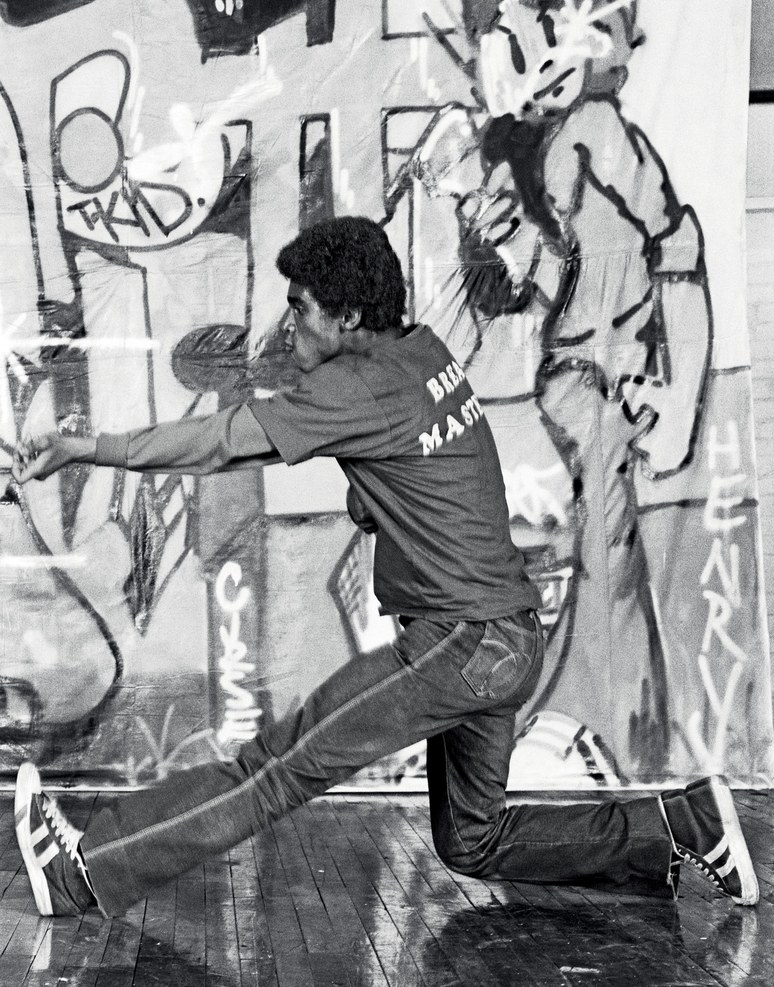
This was taken in 1981. I love it so much.
A Short History of Women Film Editors
For No Film School, Joanna Naugle breaks down the history of women editing film, a role women dominated in the silent and early sound era (when film editing was seen as 1) tedious and 2) like sewing), only to have men take over when the job became more visible and lucrative. Still, there’s a slew of famous and should-be-famous female editors, or rather, famous film edits that were usually made by a woman who’s better known in the industry than outside it. Special attention is given to Thelma Schoonmaker, Anne V. Coates, and Dede Allen, among others.
Climate Change is Already Drastically Altering the World’s Climate Zones
In an article published by the Yale School of Forestry & Environmental Studies, Nicola Jones details some of the ways that the Earth’s climate zones have shifted in response to our changing climate. Each effect is accompanied by a map, so you can actually see the magnitude. Her first example is that the tropics are getting bigger by 30 miles per decade.
In a paper published in August, Lu and colleagues tracked how and why the Hadley cell is expanding. They found that since satellite records started in the late 1970s, the edges of the tropics have been moving at about 0.2-0.3 degrees of latitude per decade (in both the north and the south) .The change is already dramatic in some areas, Lu says — the average over 30 years is about a degree of latitude, or approximately 70 miles, but in some spots the dry expansion is larger. The result is that the boundary between where it’s getting wetter and where it’s getting drier is pushing farther north, making even countries as far north as Germany and Britain drier. Meanwhile, already dry Mediterranean countries are really feeling the change: In 2016, for example, the eastern Mediterranean region had its worst drought in 900 years. The last time the tropics expanded northward (from 1568 to 1634, due to natural climate fluctuations), droughts helped to trigger the collapse of the Ottoman Empire.
Two quick things to note here. 1. As Jones states a couple of paragraphs above this one, the “tropics” are actually mostly dry. We think of weather in the tropics as hot and wet, but it’s actually hot and dry. The expanding tropics means hotter, drier weather for more of the planet. 2. Re: that bit on the Ottoman empire, I bet there’s an interesting book to be written on how climate change (natural and not) is a huge and unacknowledged driver of socioeconomic & political change (the Little Ice Age, the role of climate change in driving the Syrian civil war, the migrant caravan in Mexico may be climate driven, etc.)
Back to the article, some of the other shifts highlighted are:
- Tornado alley in the US has shifted 500 miles east in 30 years.
- Plant hardiness zones are moving north in the US at 13 miles per decade.
- The permafrost line has moved 80 miles north in 50 years in parts of Canada.
- The wheat belt is pushing poleward at up to 160 miles per decade.
Here’s the maps showing the shift in tornadic activity:

Climates shift and people have to move. Two more decades of this and you’re going to see hundreds of millions of climate refugees that the world is not equipped to handle.
Update: I received a couple of responses that consider climate’s role in history: Geoffrey Parker’s Global Crisis and Climate Change and the Health of Nations by Anthony McMichael. (thx, @ThomasintVeld & jonathan)
The Winners of the Astronomy Photographer of the Year for 2018

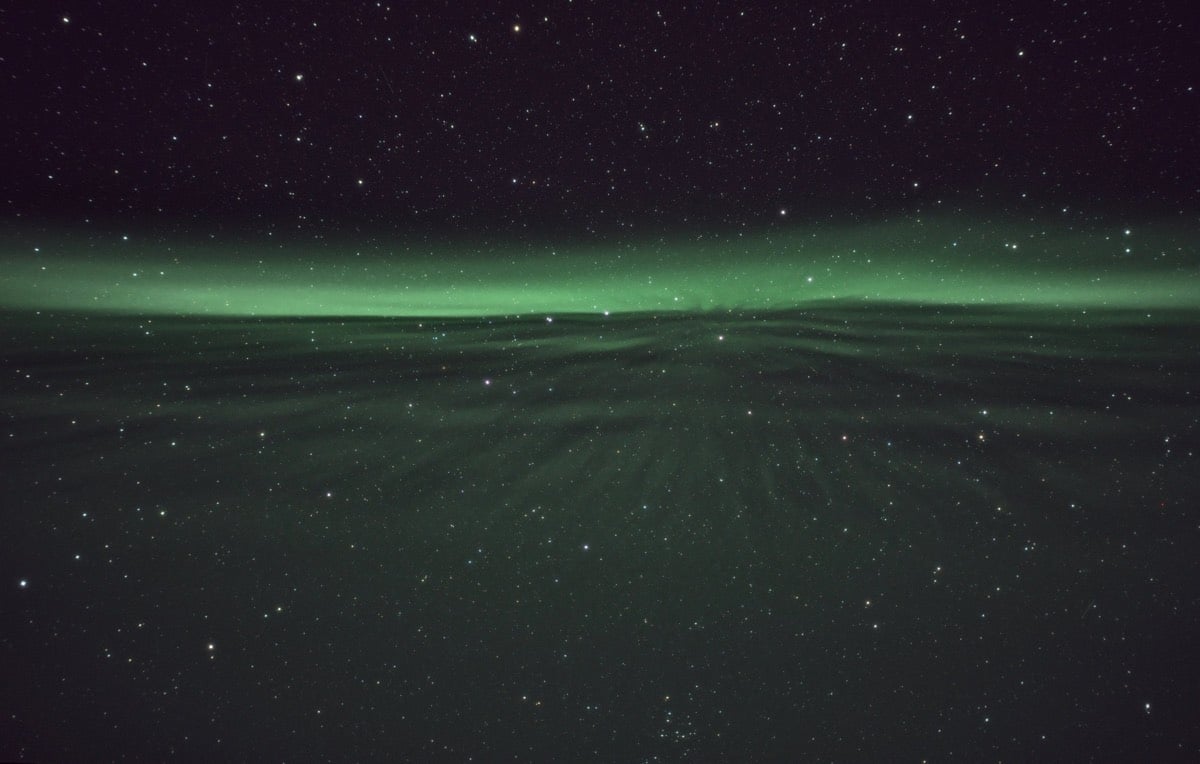

The Royal Observatory Greenwich in the UK has announced the winners of the Astronomy Photographer of the Year for 2018.
Above are three of my favorites from the overall winners list. From top to bottom are Steven Mohr’s photo of the NGC 3521 galaxy (stitched together using hundreds of exposures), Nicolas Lefaudeux’s photo of an aurora (which he somehow turns into a landscape image), and Lefaudeux’s shot of the 2017 eclipse (you know I’m a sucker for a good eclipse photo).
If you find yourself in London before May, the winning photos are on display at the National Maritime Museum or in book form everywhere.
If you don’t have a pro account, Flickr is going to *permanently* delete all but your 1000 most recent photos in January. All those conversations presumably gone too. :(
Some Reflections from My Trip to Berlin

Even for a city almost 800 years old, Berlin has seen more than its fair share of history, especially in the 20th century. Watching the fall of the Berlin Wall on television 29 years ago this month was one of my most memorable experiences as a teen. In 2001, my girlfriend and I visited Berlin, loved it, and wanted to return soon. But you know how that goes sometimes, and I didn’t make it back there for a visit until mid last month, when I spent the better part of a week exploring Germany’s largest city. Here are of my impressions from the trip.
Museum-going is one of my favorite things to do when travelling and Berlin has a bunch of great ones. And they’re not generally these behemoths like the Met or Louvre…they’re reasonably sized places you can knock out in a couple of hours. The recreation of the Ishtar Gate at the Pergamon is one of my favorite things at any museum I’ve been to.
The public transportation in Berlin is great. One ticketing scheme covers buses, trams (in the old East Berlin), surface trains (S-Bahn), and subways (U-Bahn). I bought a weekly pass and used it to travel all over the city. One afternoon with no fixed agenda, I explored by randomly hopping on trams and trains and getting off when things started looking interesting…navigation by an arbitrary stupid goal.

Yes, I had the currywurst. And a kartoffelpuffer (served with a massive dollop of delicious sour cream w/ herbs in it). I preferred the knackwurst I got from Konnopke’s Imbiß and the schnitzel from Scheers, which reminded me a bit of Crif Dogs (but for schnitzel). The guy at Konnopke’s made an “ick” face when I asked for ketchup with my knackwurst instead of mustard. *shrug*
According to Pedometer++, I walked 65 miles over a 7 day period in Berlin.
At the Neues Museum, I read a bit of Homer’s Iliad on a papyrus scroll from more than 2000 years ago. The kids and I have been reading Emily Wilson’s translation of The Odyssey so that was a nice moment of connection across the centuries. (I also saw the bust of Nefertiti there.)

My favorite thing about public transport in Berlin is that instead of having entry turnstiles and swiping your ticket when you get on the bus, you simply buy a ticket and get it stamped on the platform to validate it. That’s it. With my weekly pass, I had to stamp it once to “activate” it, but after that, I could just get on the tram or subway without worrying about it. I love this system…it eliminates so much infrastructure, makes it easier to use public transport, and doesn’t track you around the system like smartcards do. It also makes it easier to ride for free, although there are teams of ticket inspectors moving throughout the system checking for valid tickets. Fines of €60 on up are assessed & paid on the spot.
A team of three undercover ticket inspectors got onto a tram I was riding…they were young, dressed a bit like hooligans, and looked way more like they were gonna steal wallets than officially check tickets. After nonchalantly boarding, they announced themselves to the passengers, pulled out their badges, and worked very quickly, impatiently looking at tickets before the tram pulled into the next stop and scofflaws could escape.
The Memorial to the Murdered Jews of Europe is an open-air memorial of more than 2700 concrete slabs arranged in a grid pattern. While I was there, I saw it being used as a bench, a picnic area, a playground, a hide-n-go-seek maze, a selfie background, a parkour apparatus, and as the backdrop for Instagram influencers…pretty much everything but thoughtful reflection about the murder of 6 million people. See also Yolocaust.
Everyone kept telling me that the city had changed so much since I’d been there, but one of the only differences I could detect was that in 2001, it was pretty easy to tell which parts of the city had been in East Berlin and which had been in West Berlin, just by looking at the buildings and streets. Now, aside from the presence of random Soviet monuments and the tram in the former East Berlin, I couldn’t really tell. After almost 30 years, Berlin finally seems like a single city again (at least to this outsider).
The Deutsches Technikmuseum (German Museum of Technology) is actually huge and completely amazing, especially the collection of trains and train cars housed in the massive buildings of a former railway company. The smell of grease and oil that hit me walking into the exhibition took me right back to when I was a kid, helping my dad fix cars in the garage. As I mentioned in this post, the exhibition included a freight car that was used for transporting Jews to concentration camps that you could walk inside of “and try to imagine, in some small way, you and your children cheek to jowl with 80 other people, on the way to be murdered”. An intense experience.
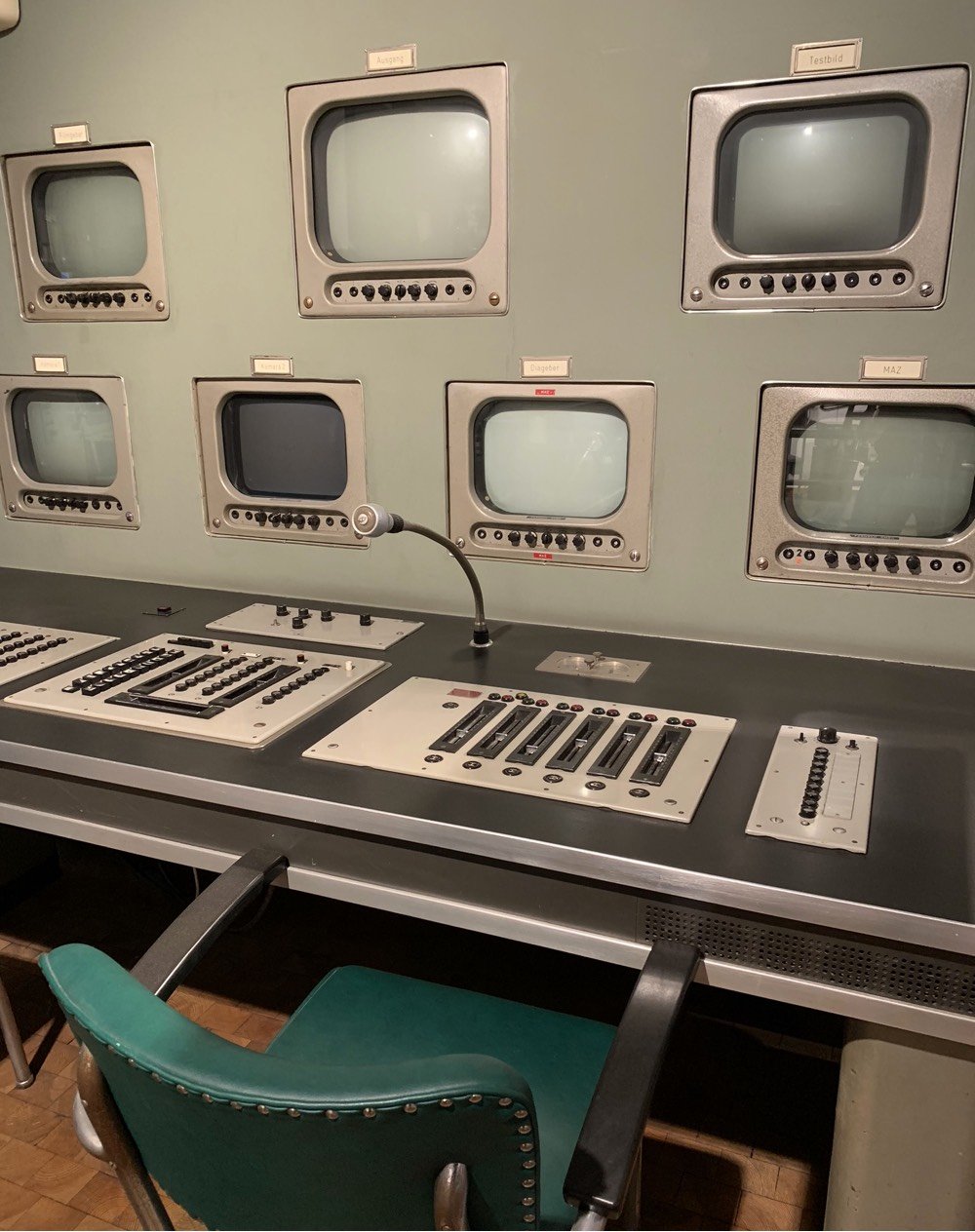
The massive seven-story KaDeWe department store has an entire floor dedicated to food (in addition to the eatery on the top floor) and the butcher cases must have featured over 120 different kinds of sausage & wurst…it was unbelievable. I spent more than an hour wandering through and ended up having dinner, some scrambled eggs with a side of potatoes and onions — the menu had a disclaimer on the bottom of each page: “Of course our potatoes and onions are made with bacon!” Duh, this is Germany.
The permanent exhibition at the Topographie Des Terrors is a must-see presentation of how the Nazis persecuted, imprisoned, and murdered millions in the 30s and 40s. While sobering and completely gutting in parts, this was one of my favorite things I did in Berlin.
While not quite public transport, Berlin has a thriving bike share scene. I signed up for Mobike because they seemed to have the most inventory. As a bike-friendly city to begin with, there are lots of places on the streets to park these dockless bikes, although locals have complained about bike littering. This was my first time using a dockless bike, and like with WiFi on a laptop or pairing a Bluetooth speaker, the first time feels a little magical.
My favorite meal was at the restaurant in my hotel. That’s a bit of an odd thing to hear because we’re used to hotel restaurants being kind of a default mediocre. But the food at the Michelberger’s restaurant was delicious, surprising, and inventive. I had the burrata w/ pear & dukkah and the arctic char w/ smoked mashed potatoes & buttermilk. Just thinking about that meal is making me hungry!

Berlin reclaimed Tempelhofer Field as a public park after the Tempelhof airport closed in 2008. I’d never walked on a large runway like that before…they’re huge! I was supposed to meet up with Felipe of Fotostrasse to take a more extensive tour of the area, but it was rainy and I was sick, so I only managed a quick solo visit. Next time!
I only posted a couple of pics from Berlin on Instagram, but I did post a bunch of Instagram Stories (collected here). And thanks to everyone on Twitter and Instagram who offered suggestions for my trip! I had a great time and I will definitely be back, hopefully before 17 more years have passed.
Vote for Minna

Inspired by the Clinton campaign, my daughter Minna made this campaign poster just before the 2016 Presidential election and taped it to her bedroom door, right next to my desk. I see that poster every day as I work and it reminds me of how fired up she was about a woman becoming President and how she saw herself in that effort. We all know how the election went and what the consequences have been so far, but that poster is still hanging proudly on her bedroom door.
Lately though, “Vote for Minna” has taken on a new meaning for me. No longer a simple campaign command, I now think of it as a guiding principle for my political activity. Self-interest in America is at record levels and I’m opting out. When I head to the polls on Tuesday, I’ll be voting with the best interests of my daughter and all of the other young people of America and the world in mind. They’re gonna need a stronger, safer, and better America and we can help. Vote for Emma. Vote for Kelsey & Miko & Isaac & Vic. Vote for Kira. Vote for Dae’Anna. Vote for Muzoon. Vote for Garrett & Gavin. Vote for Hauwa & Ruth & Kauna & Saratu. Vote for Anthony. Vote for Minna. Vote.
We’re the Organizers of the Google Walkout. Here Are Our Demands. “We demand an end to the sexual harassment, discrimination, and the systemic racism that fuel this destructive culture.”
Ultra-Impressionistic Portraits Made with Just a Few Thick Strokes of Paint
For his newest project IDENTITYCHRIST, Joseph Lee is pushing representational abstract painting to its limits.


I love how rough these are but you can still tell they’re people. Prints are available.
P.S. Lee is also an actor — you may have seen him playing the brother of the lead character in Searching, which is worth watching if only for the unique way the story is told. (via colossal)
All Over the Map: A Cartographic Odyssey
The folks behind the National Geographic cartography blog All Over the Map have come out with a book of the same name that is a “guided tour through the world’s most incredible maps”.
Just to give you a taste of the kind of stuff they feature, recent entries include maps of the most extreme places on Earth and Heinrich Berann’s panoramic paintings of national parks.
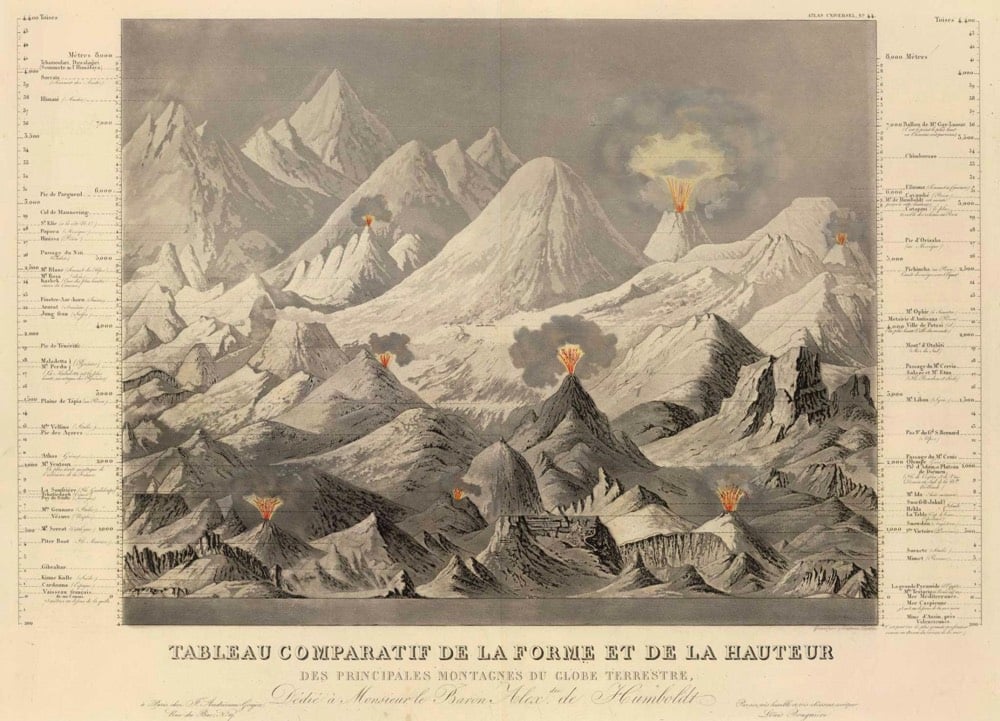






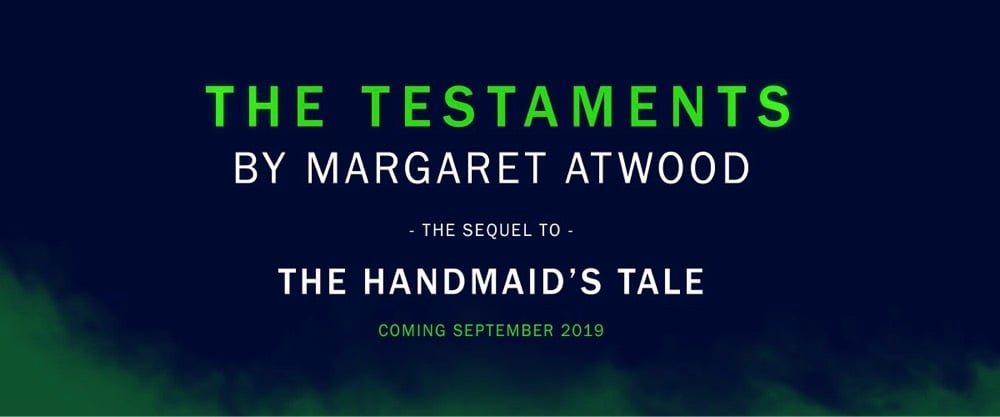
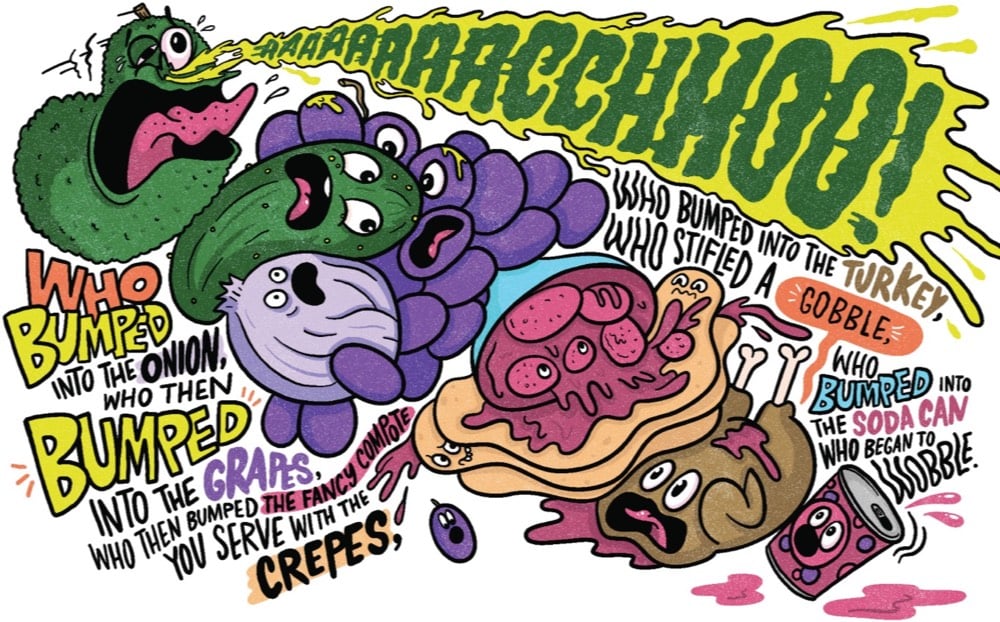
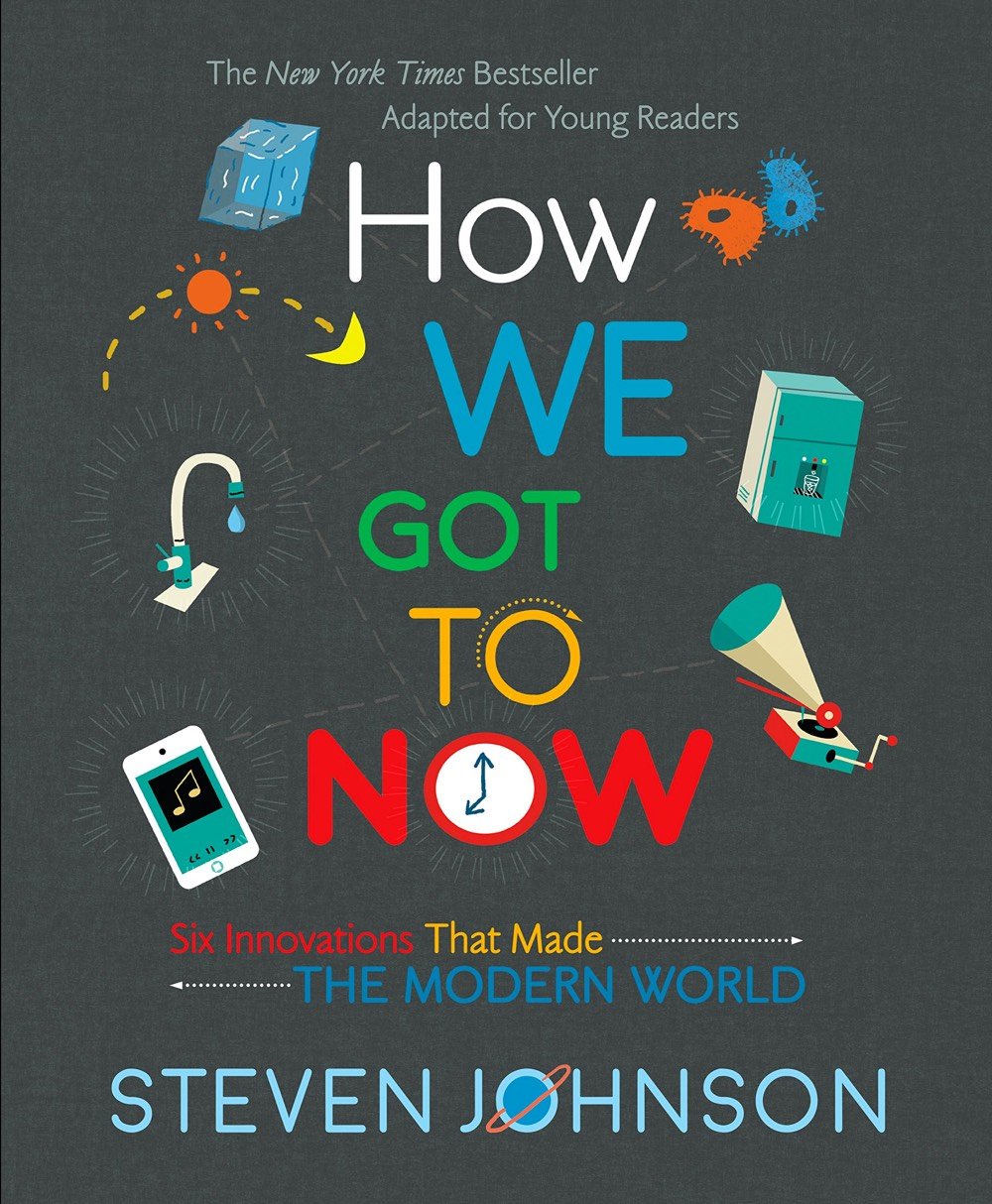
Stay Connected